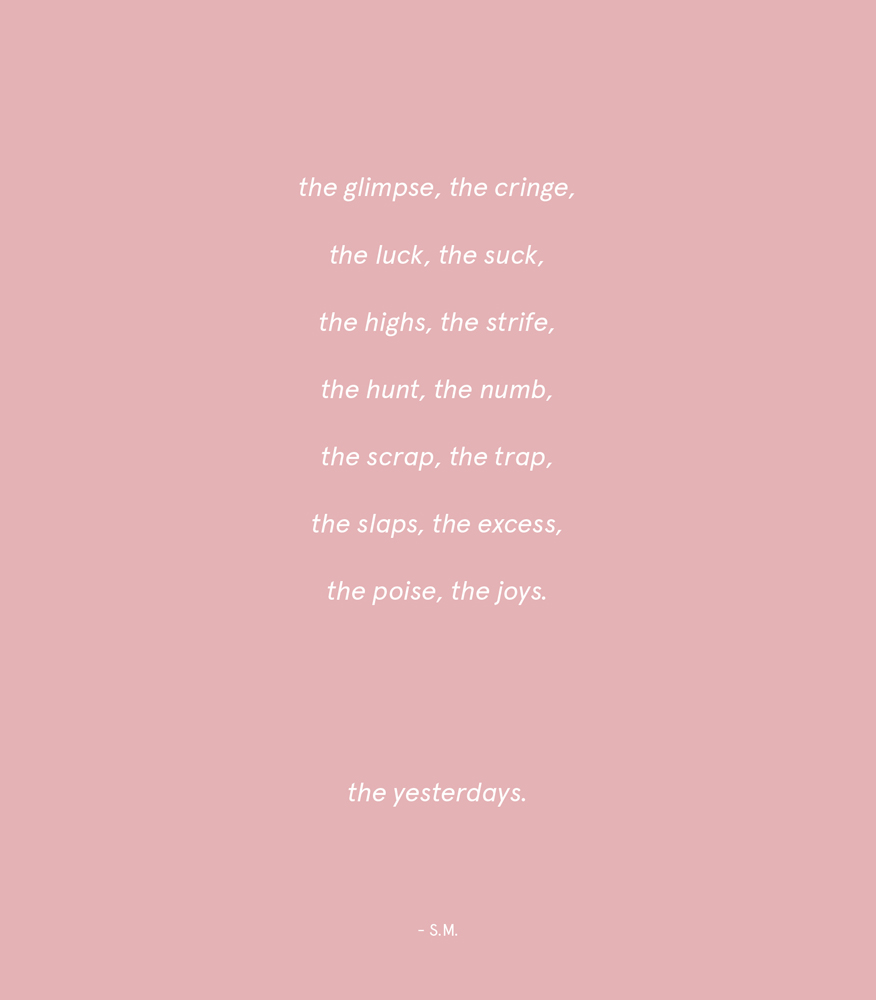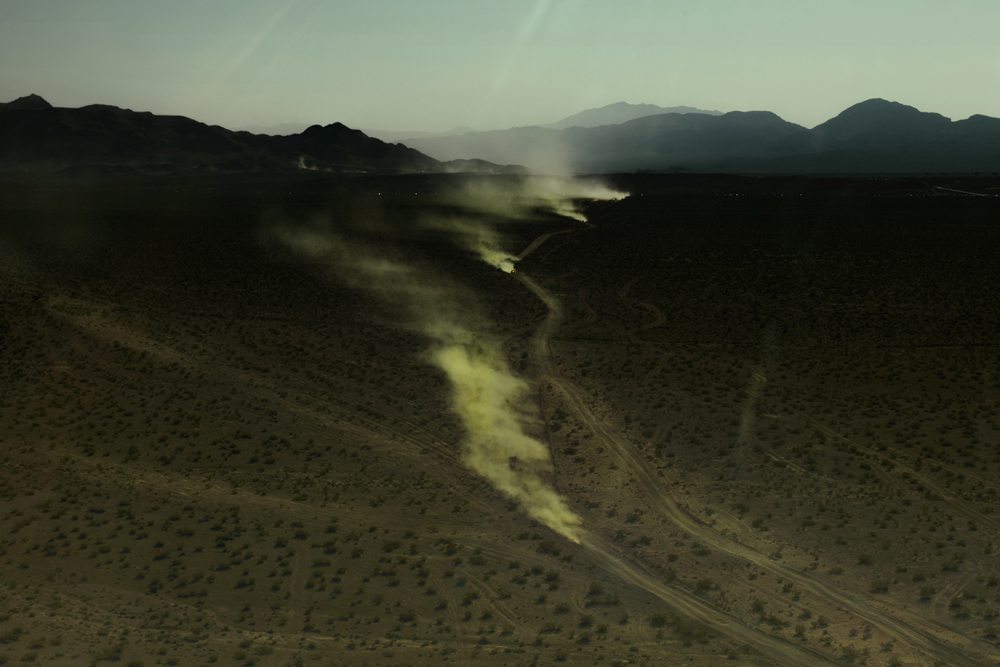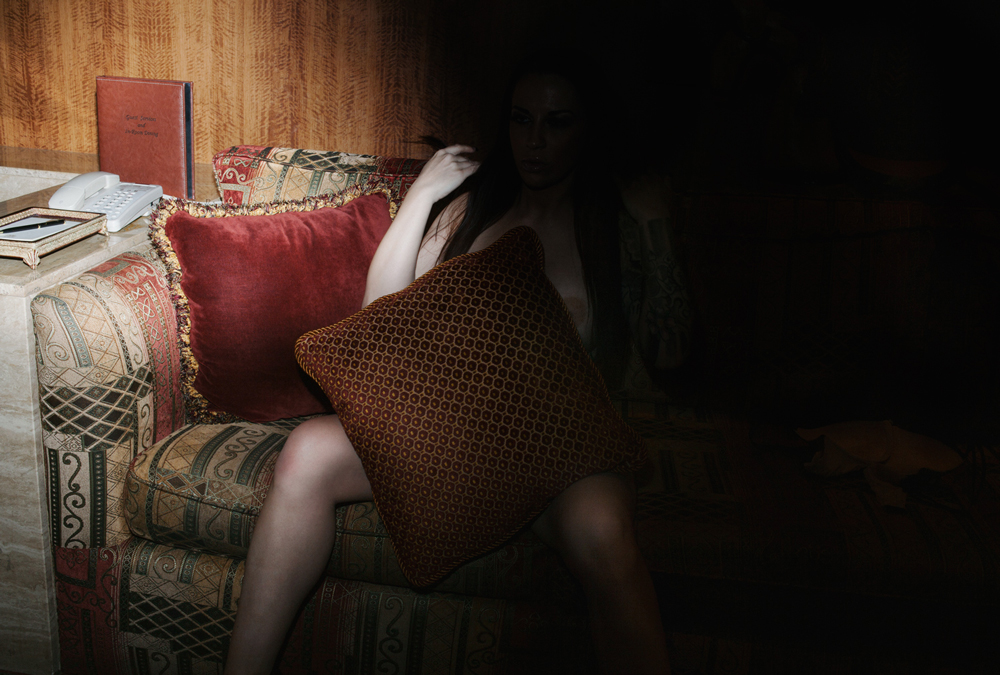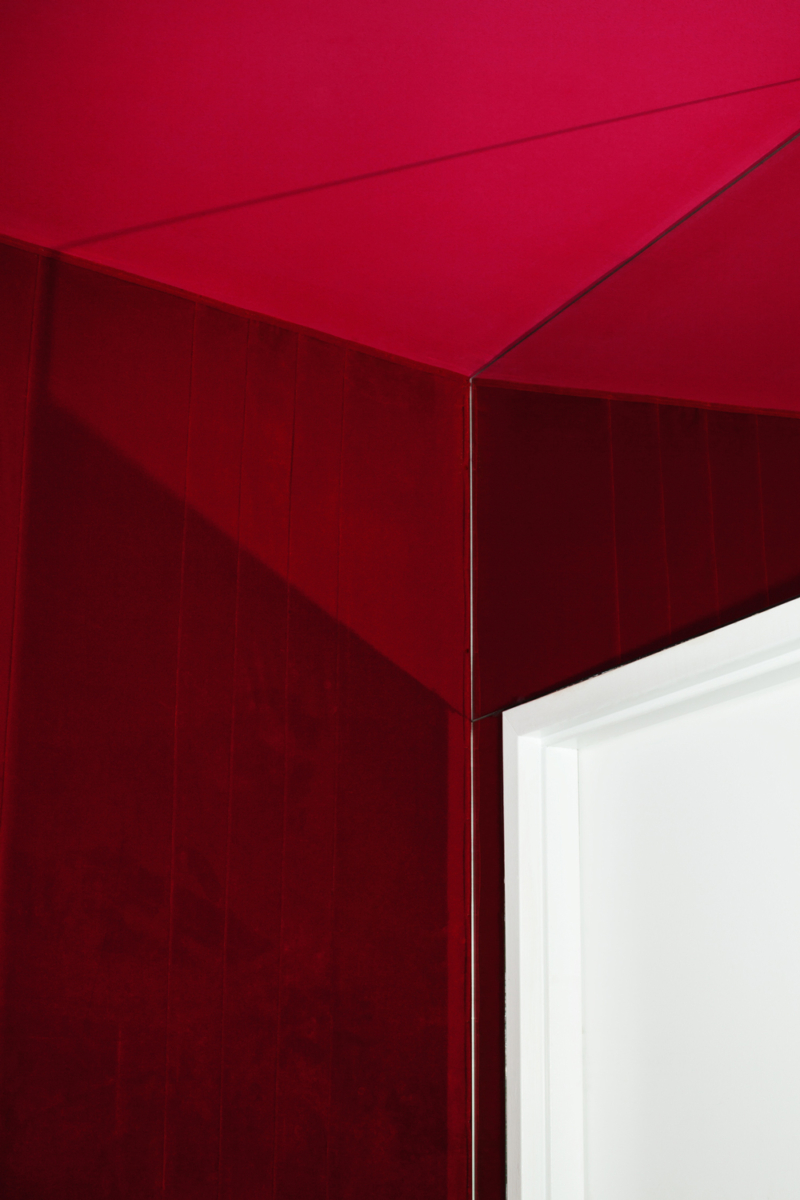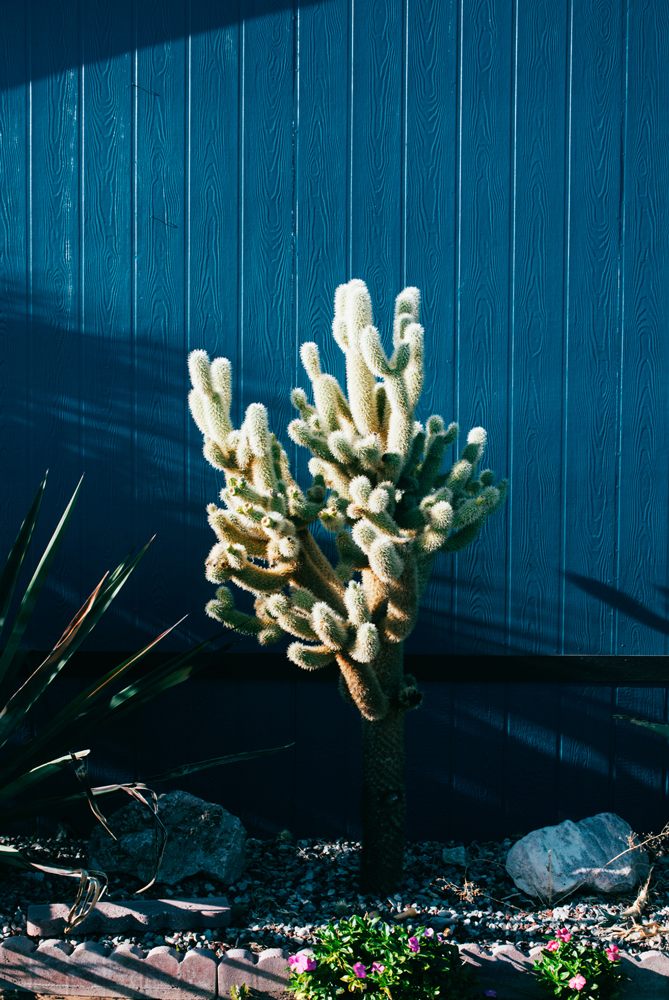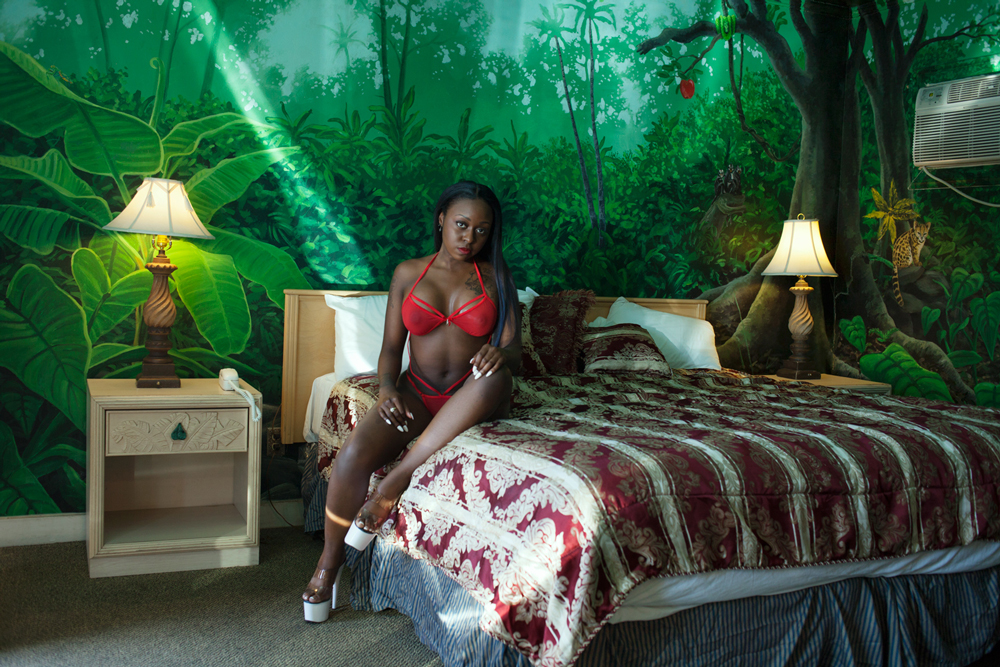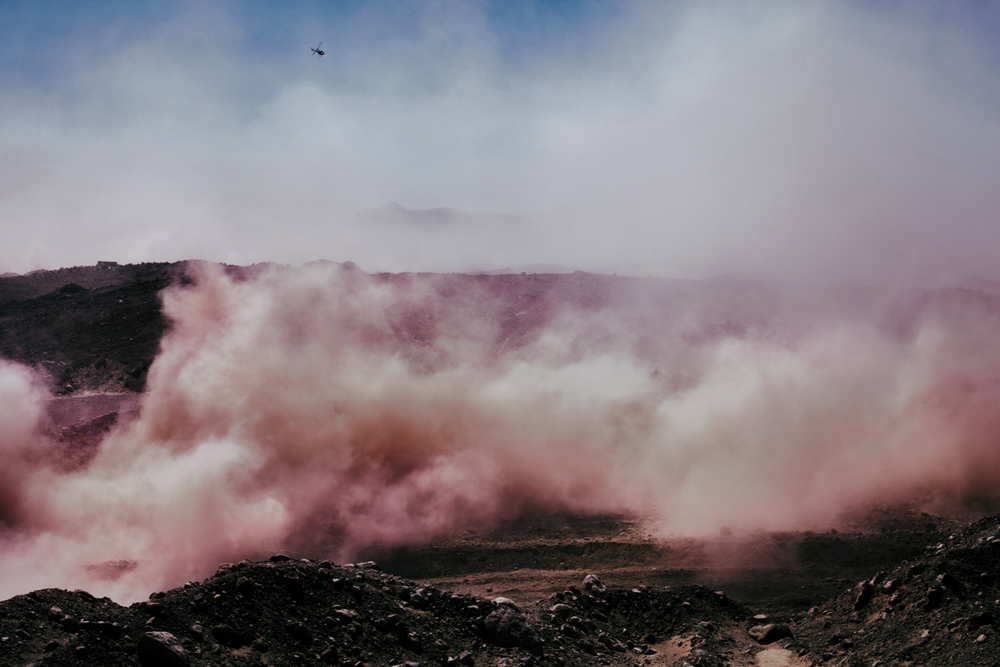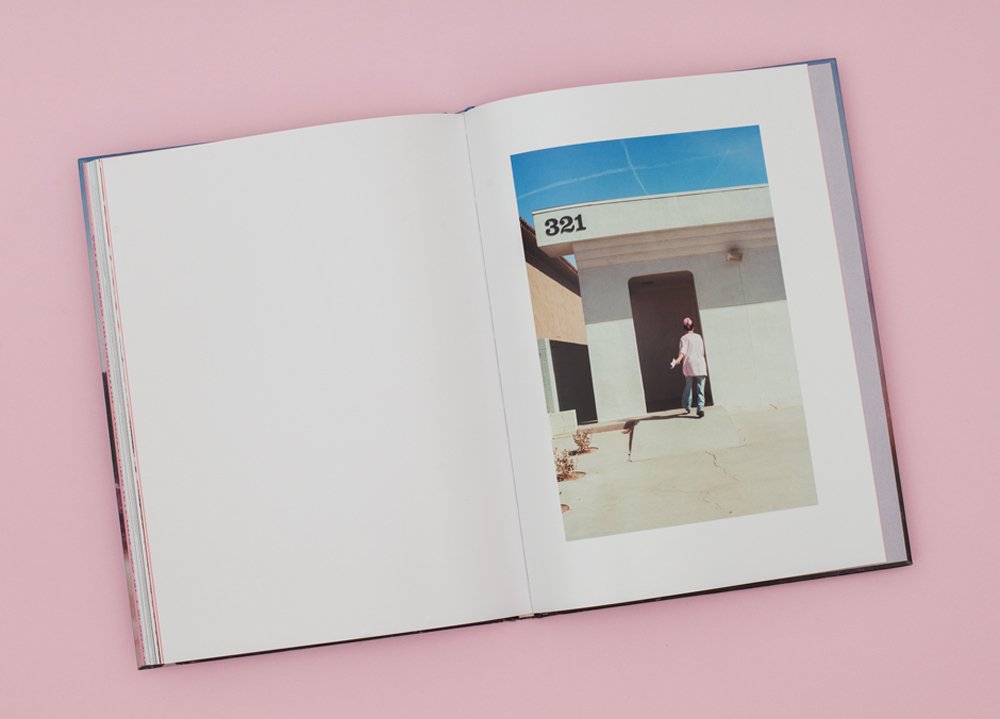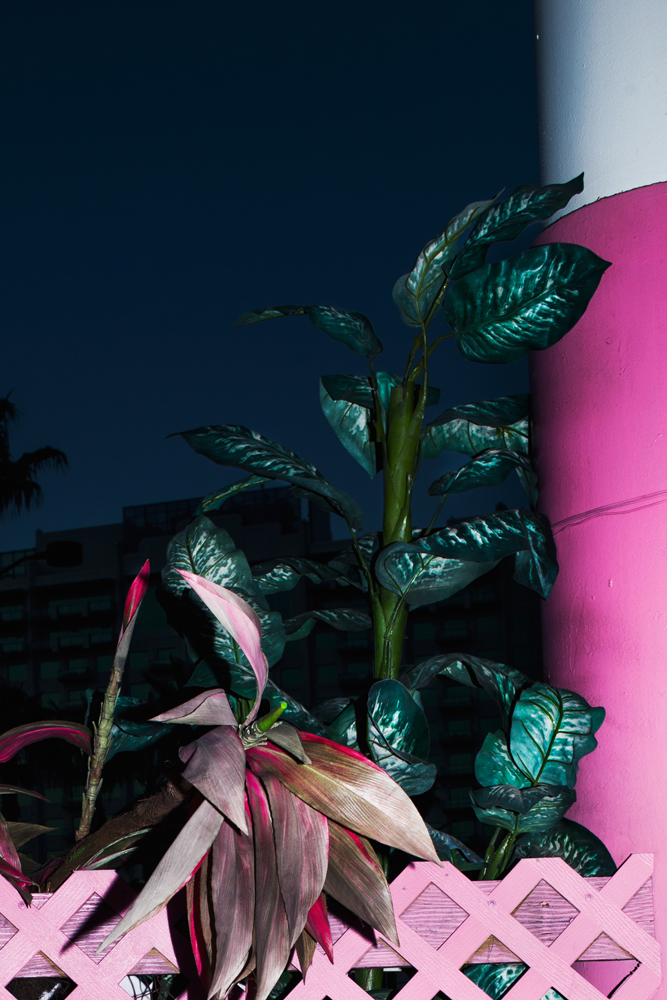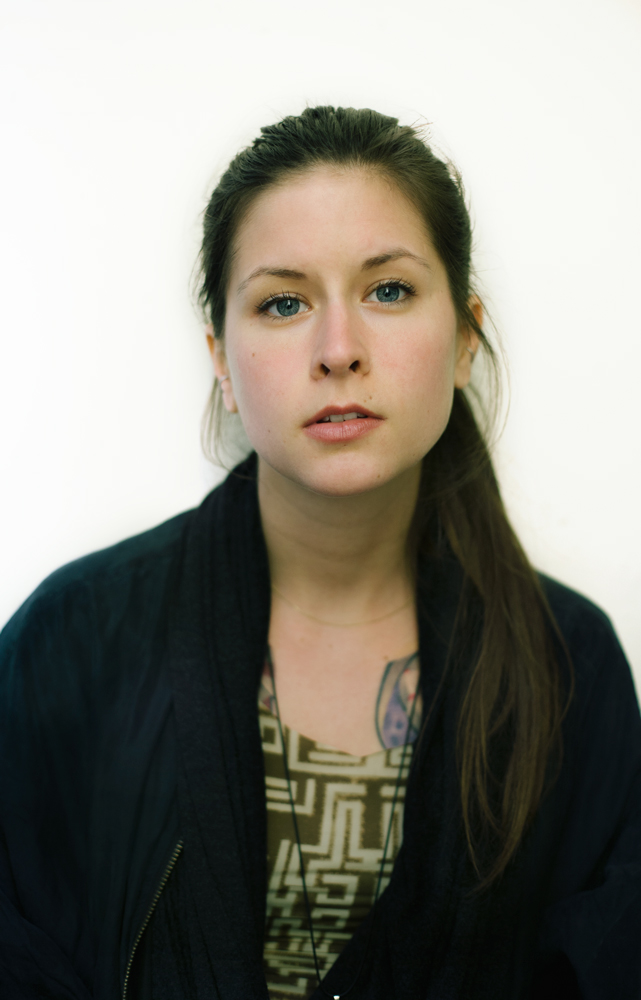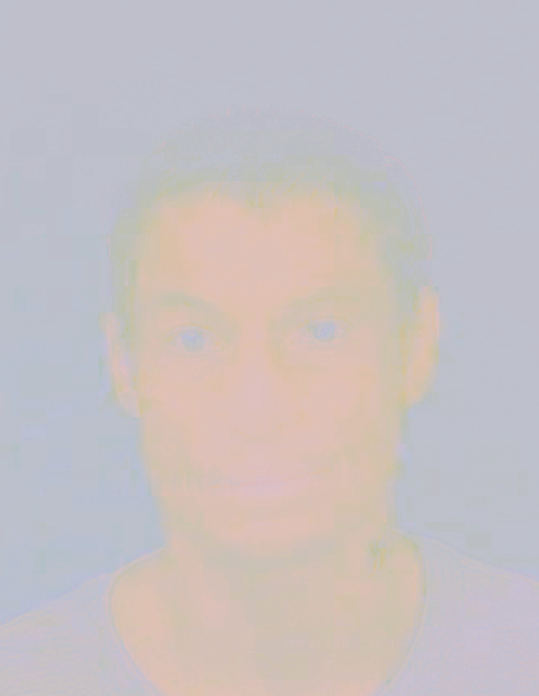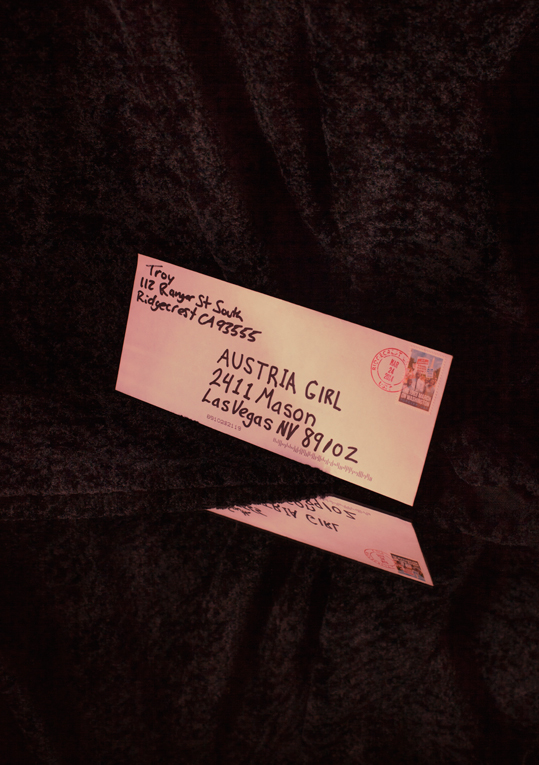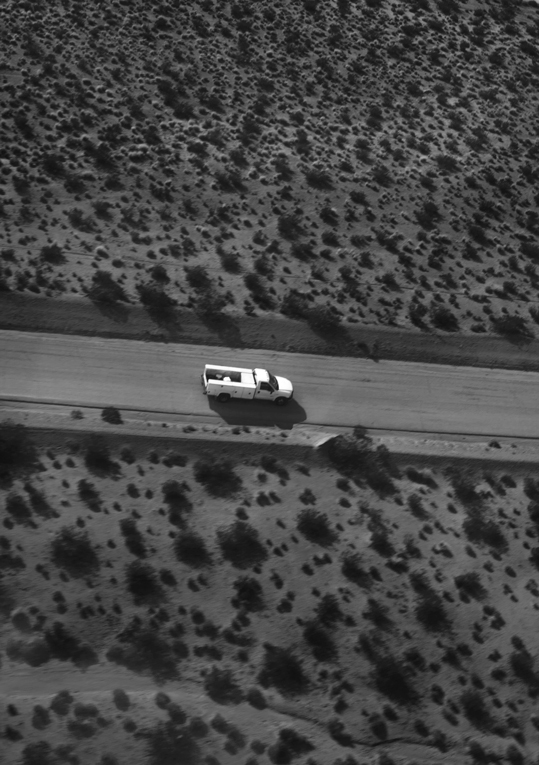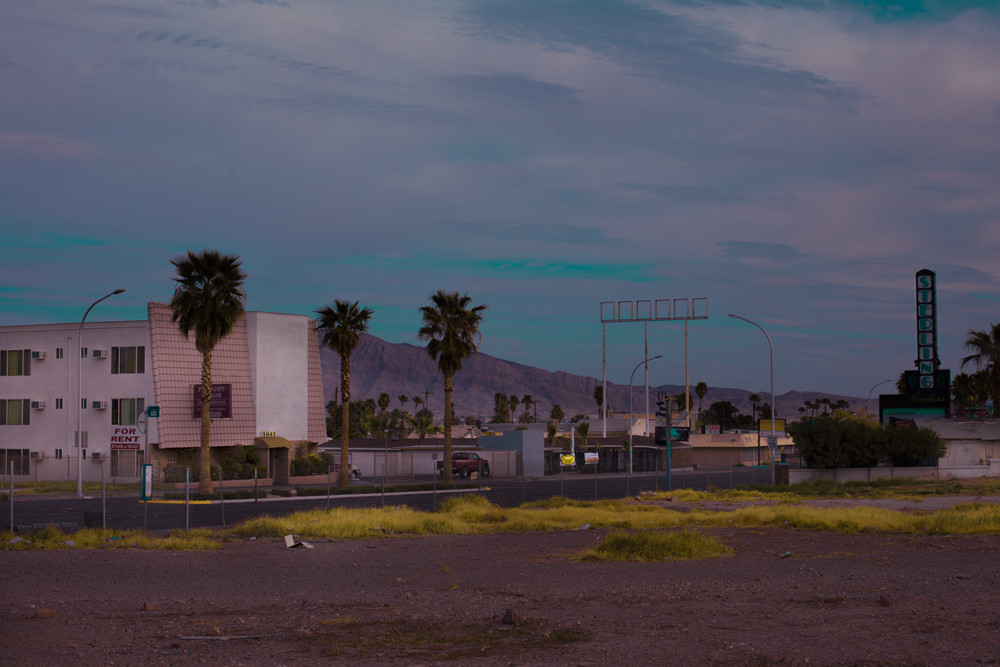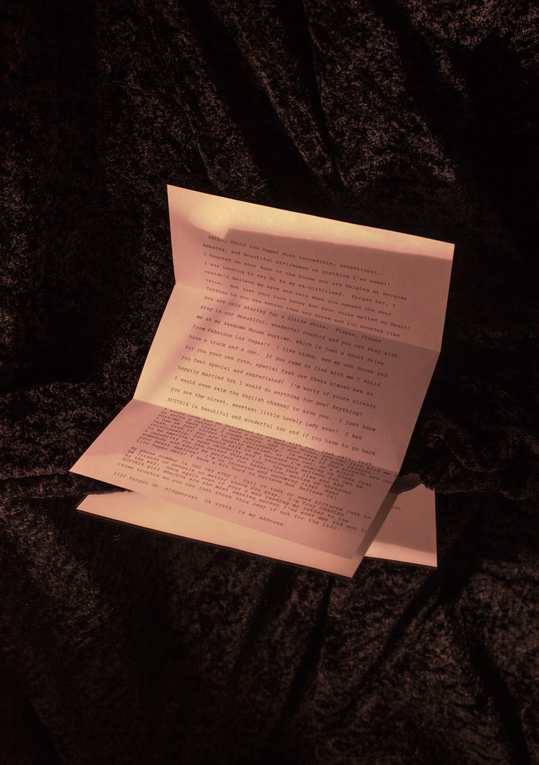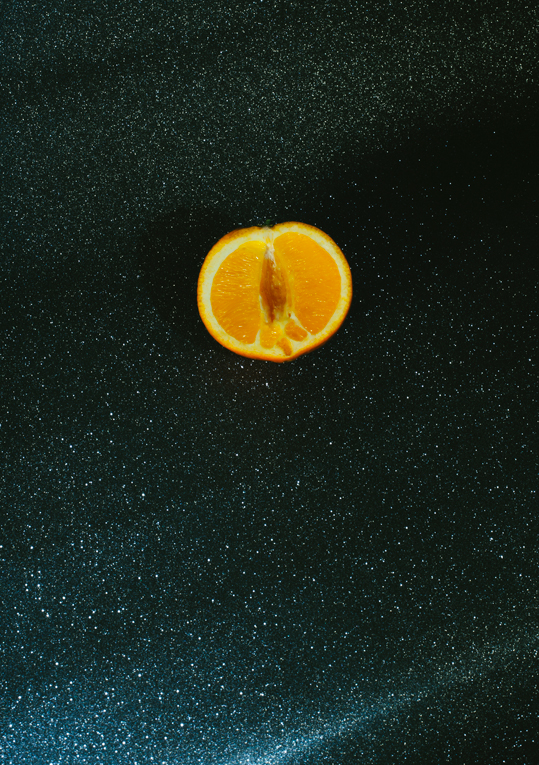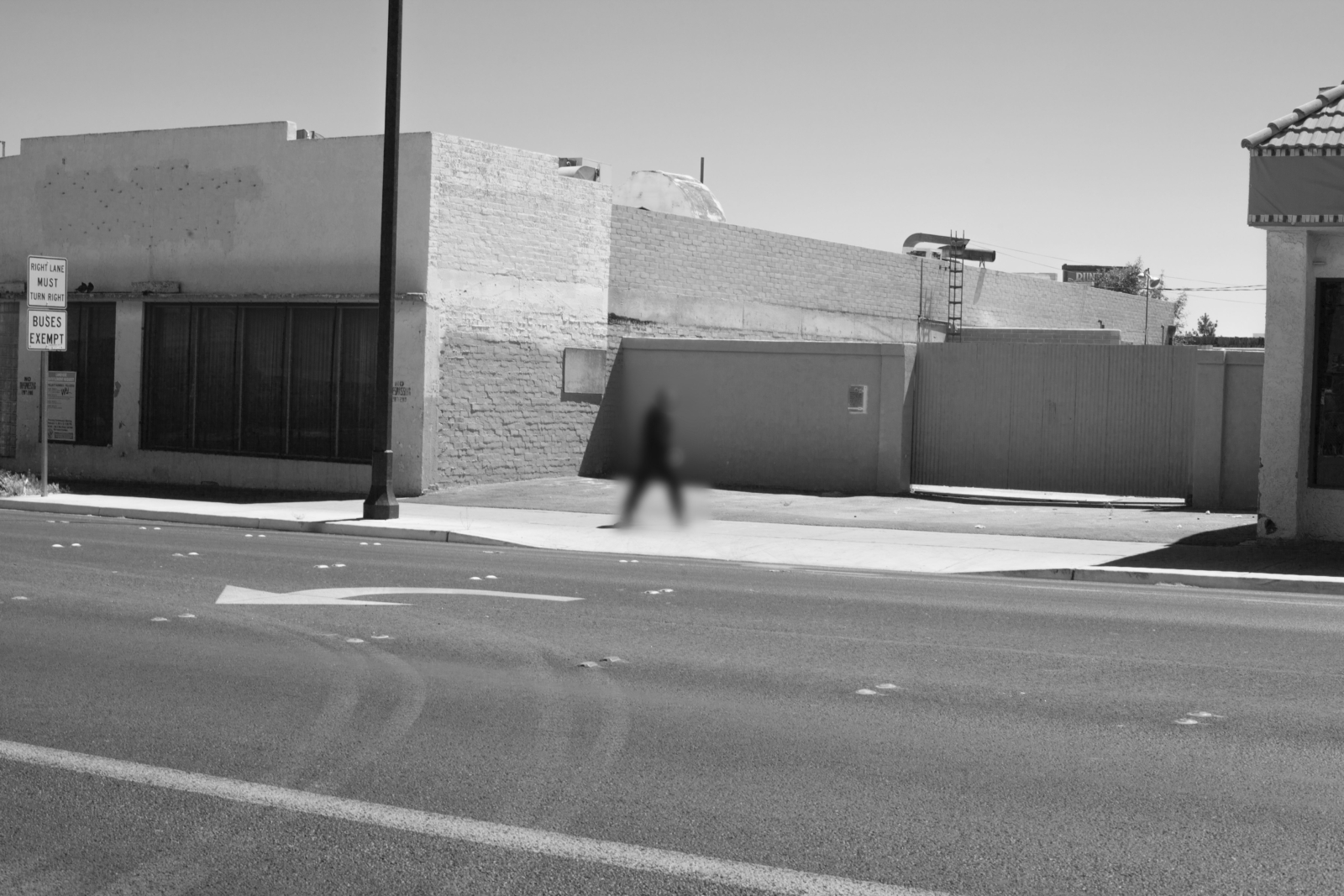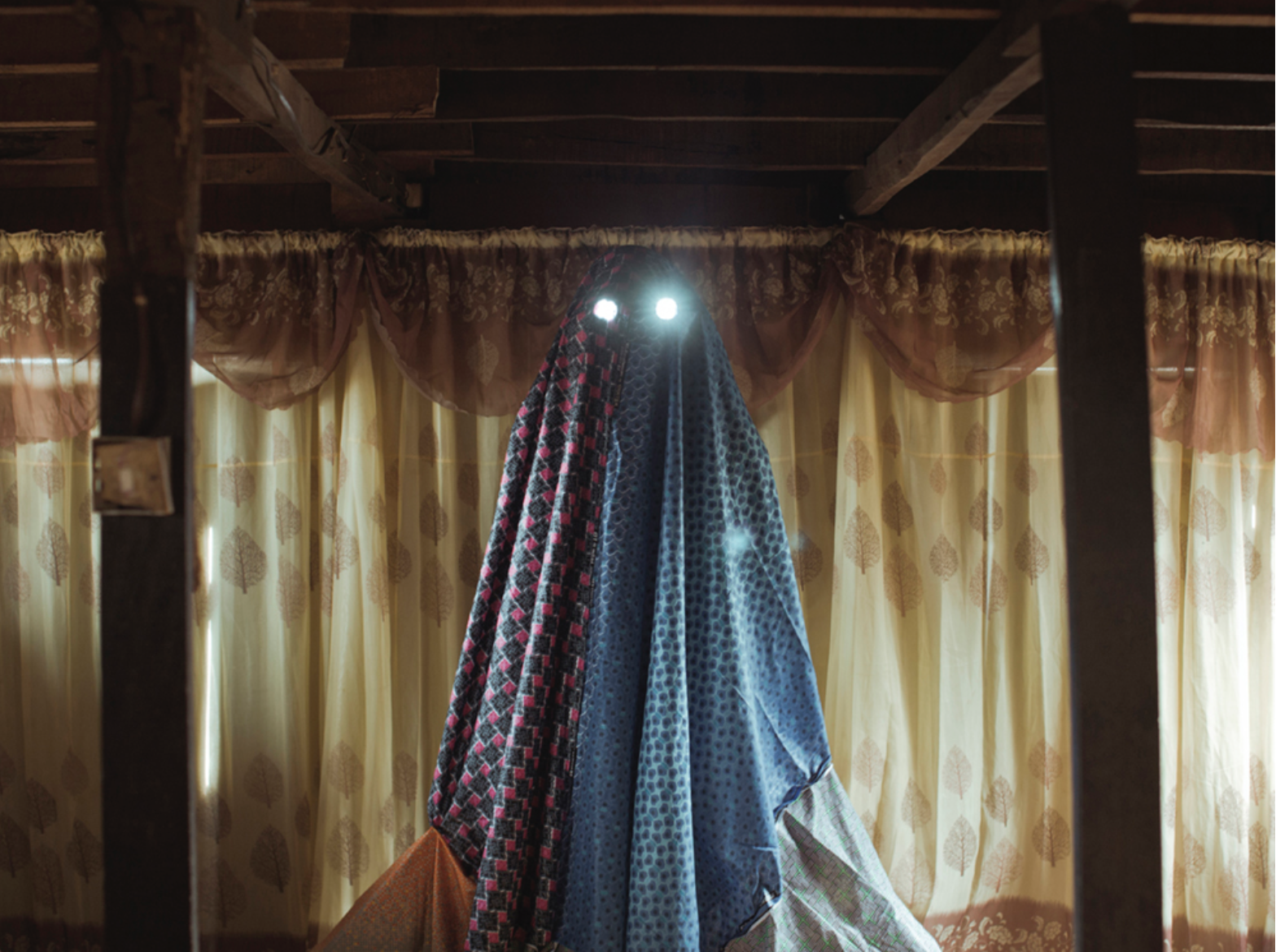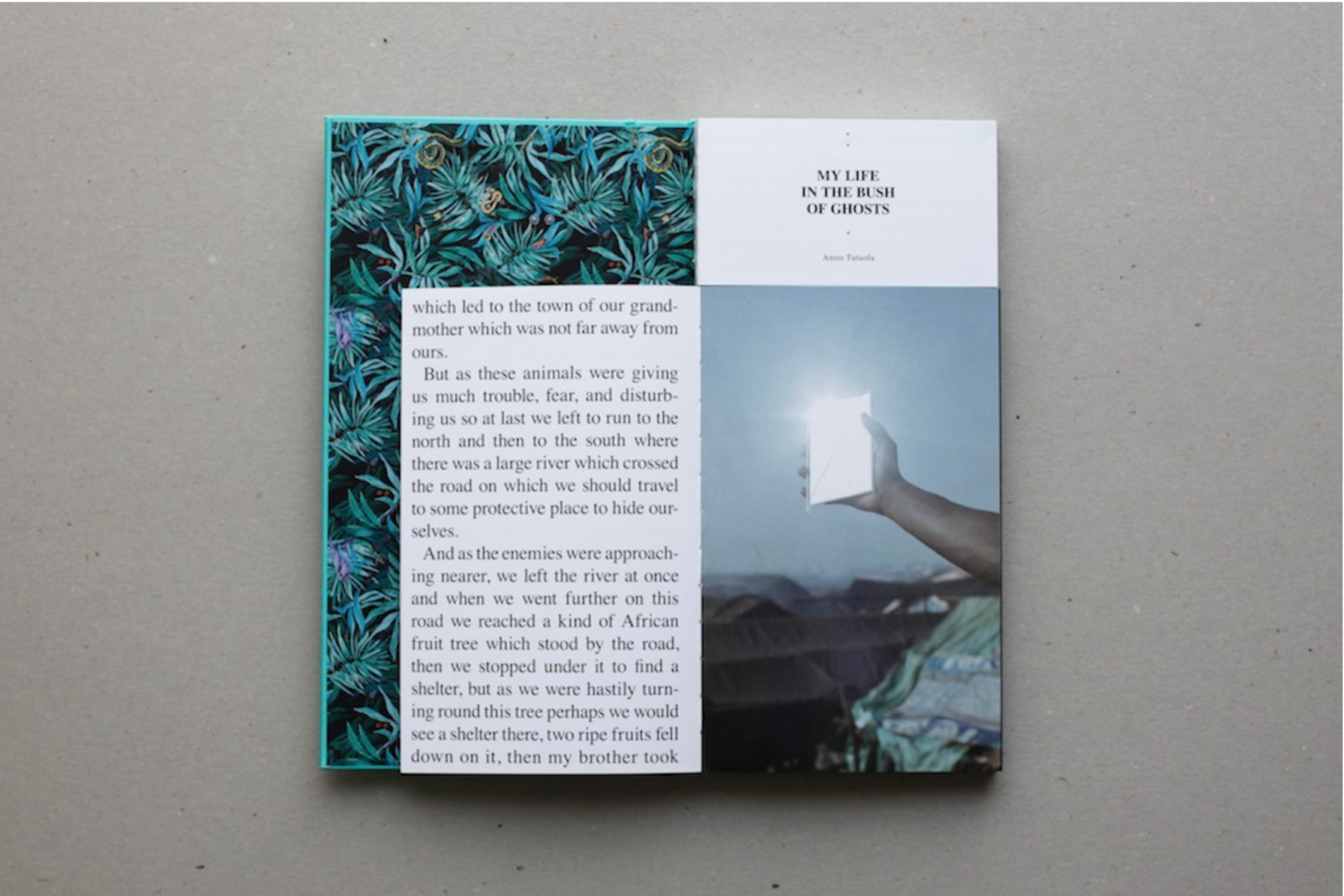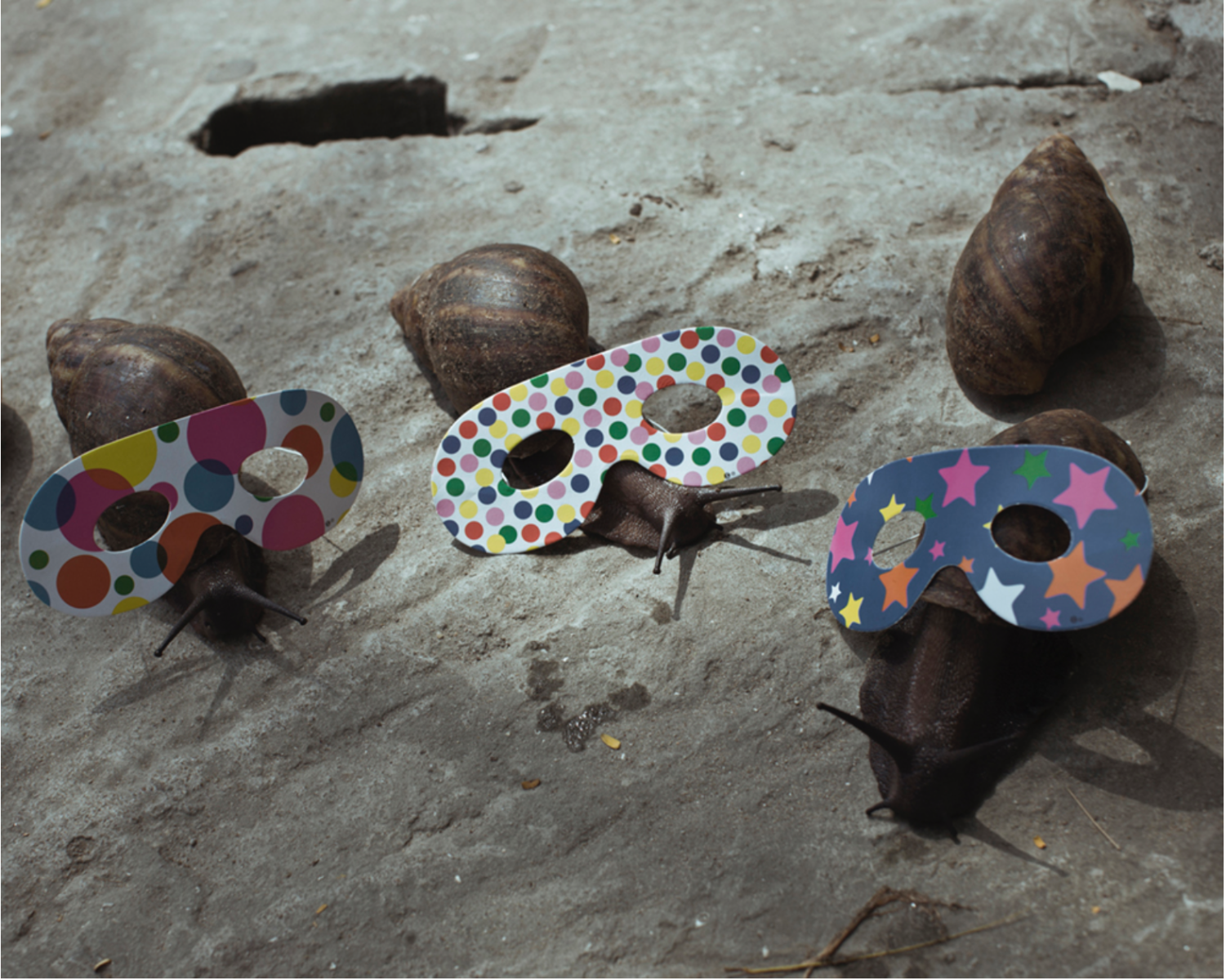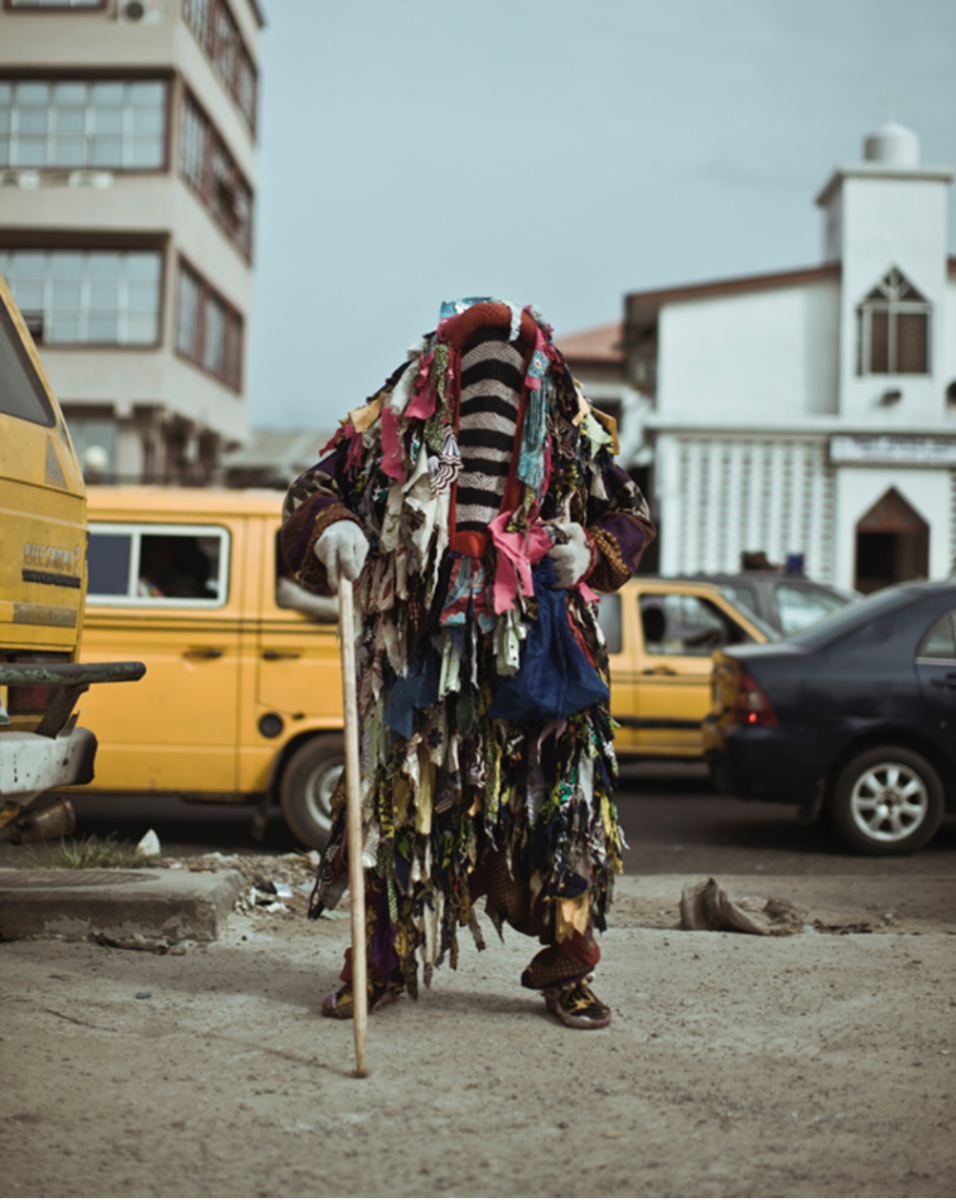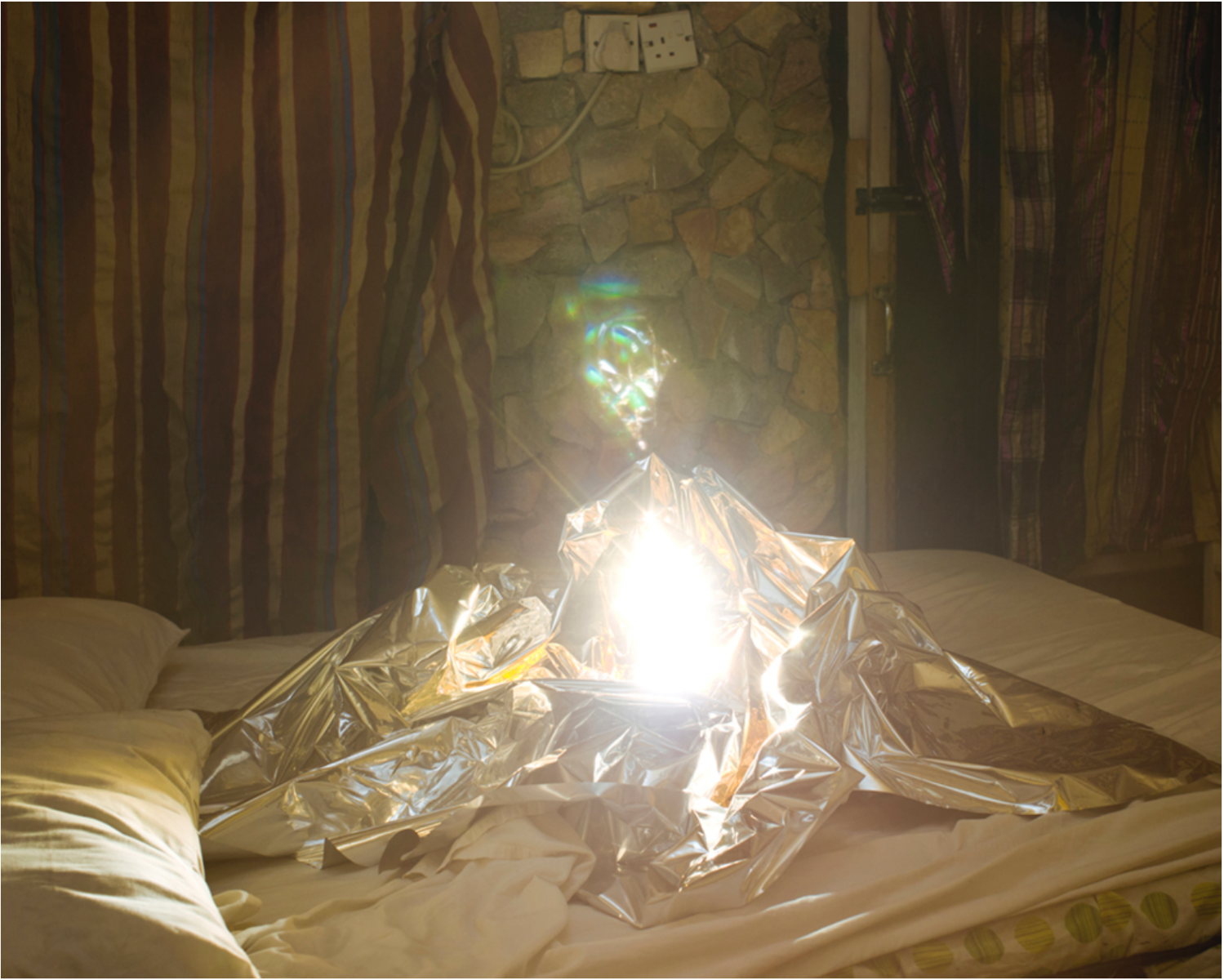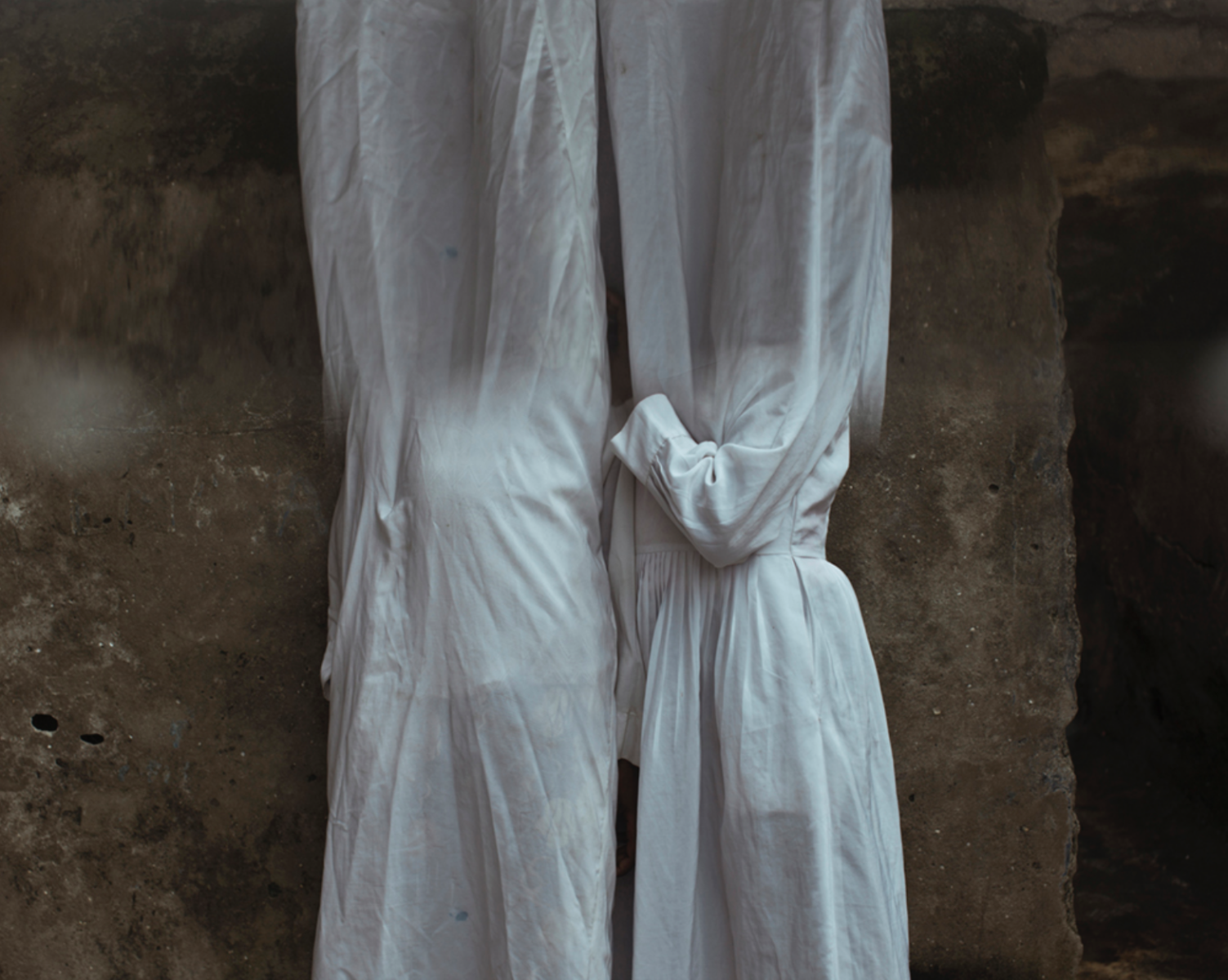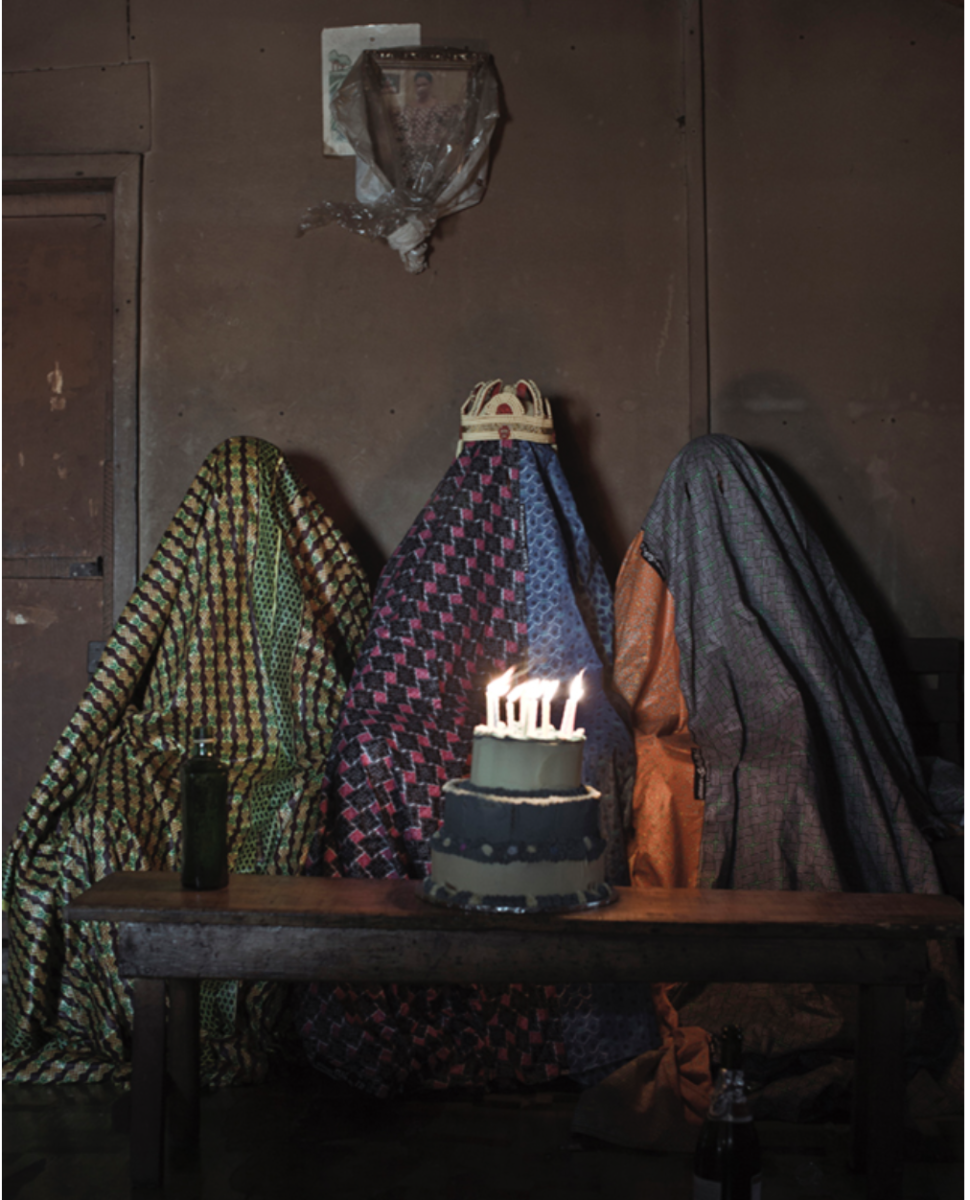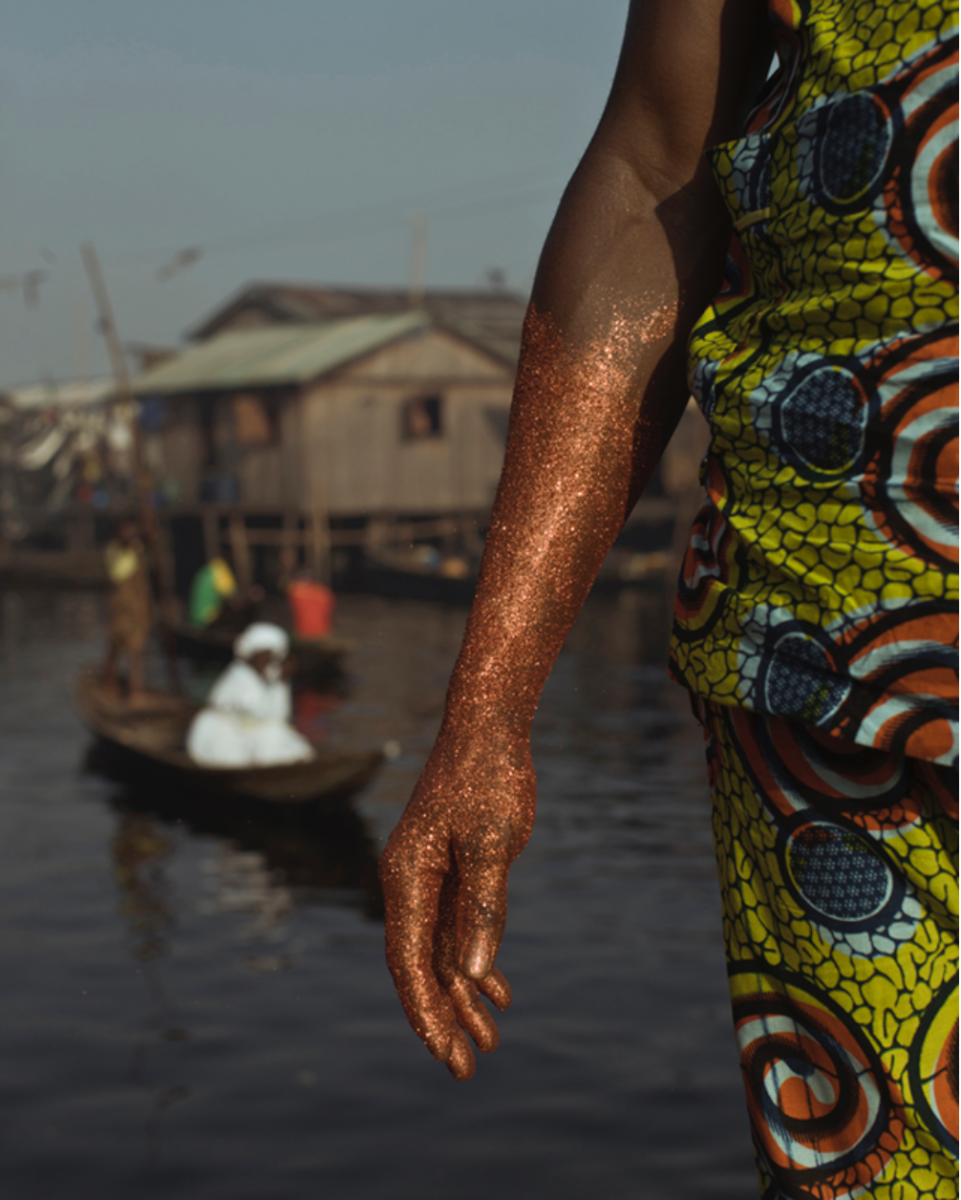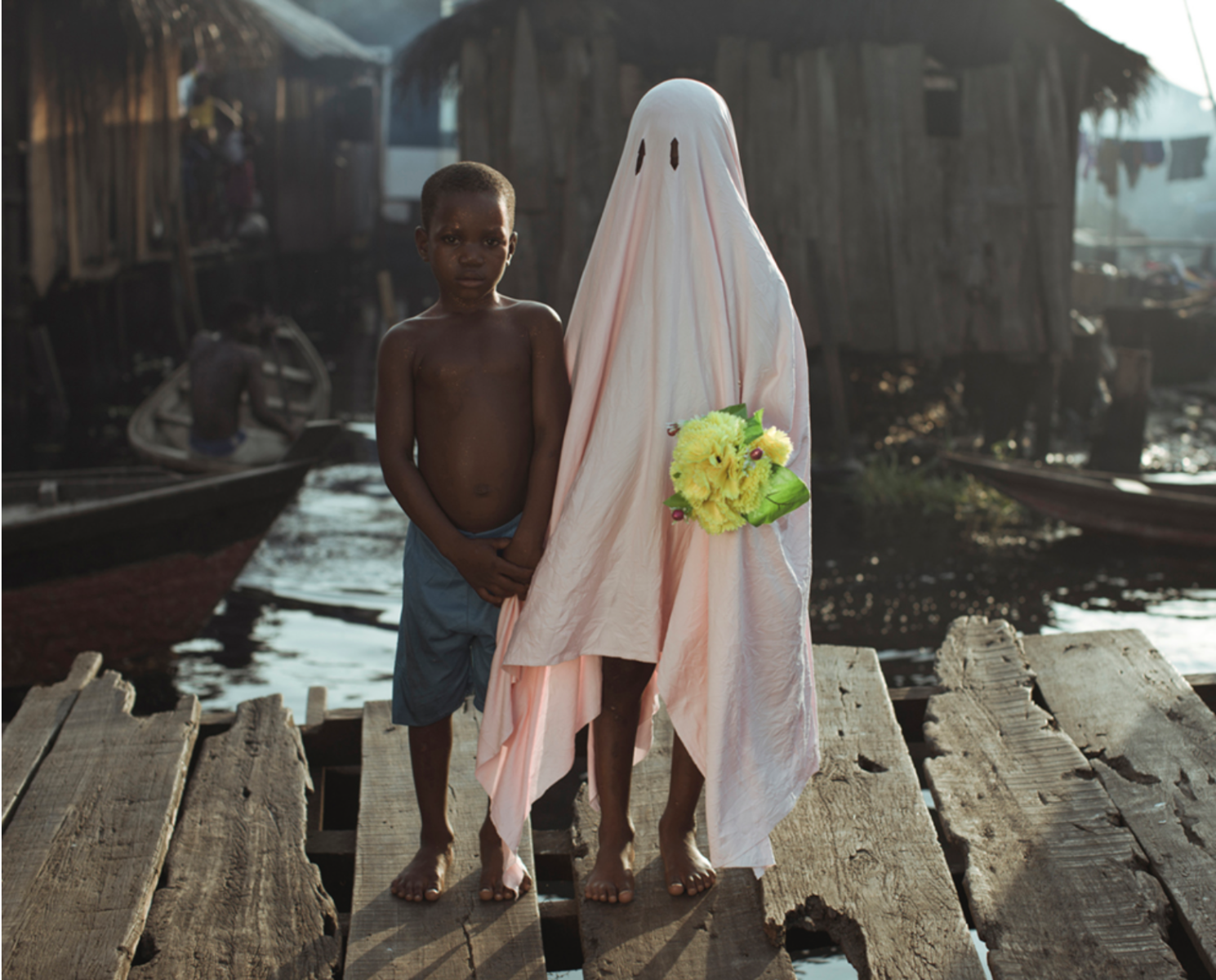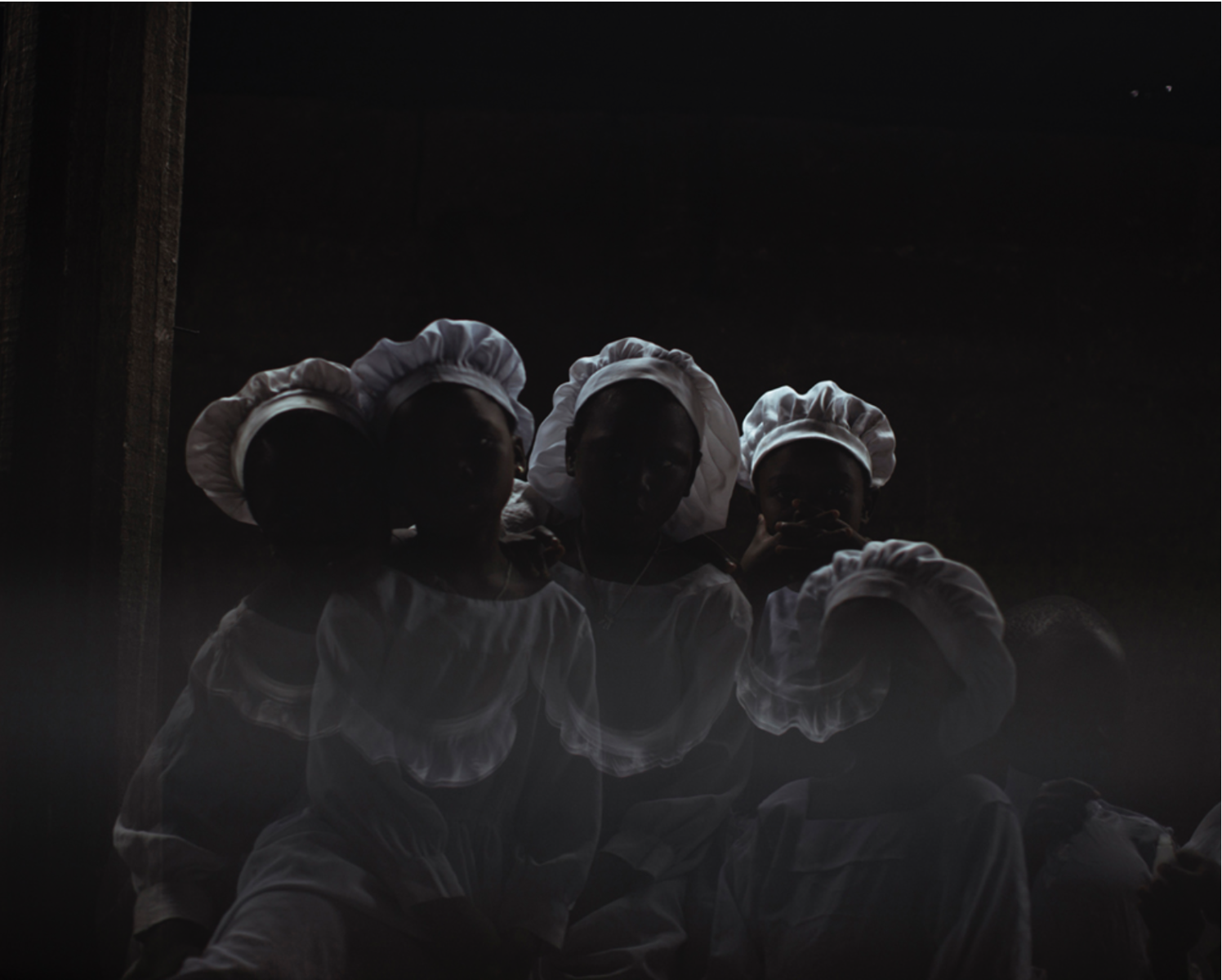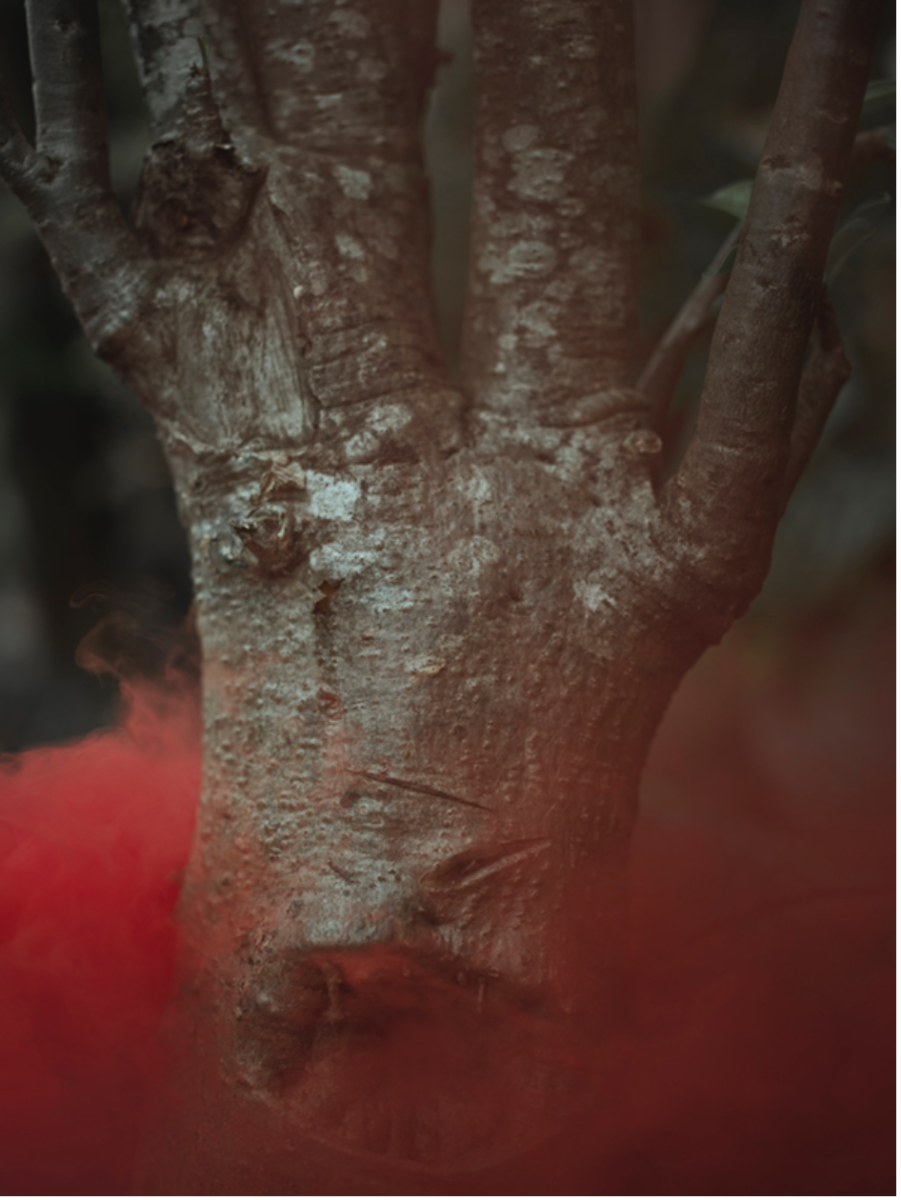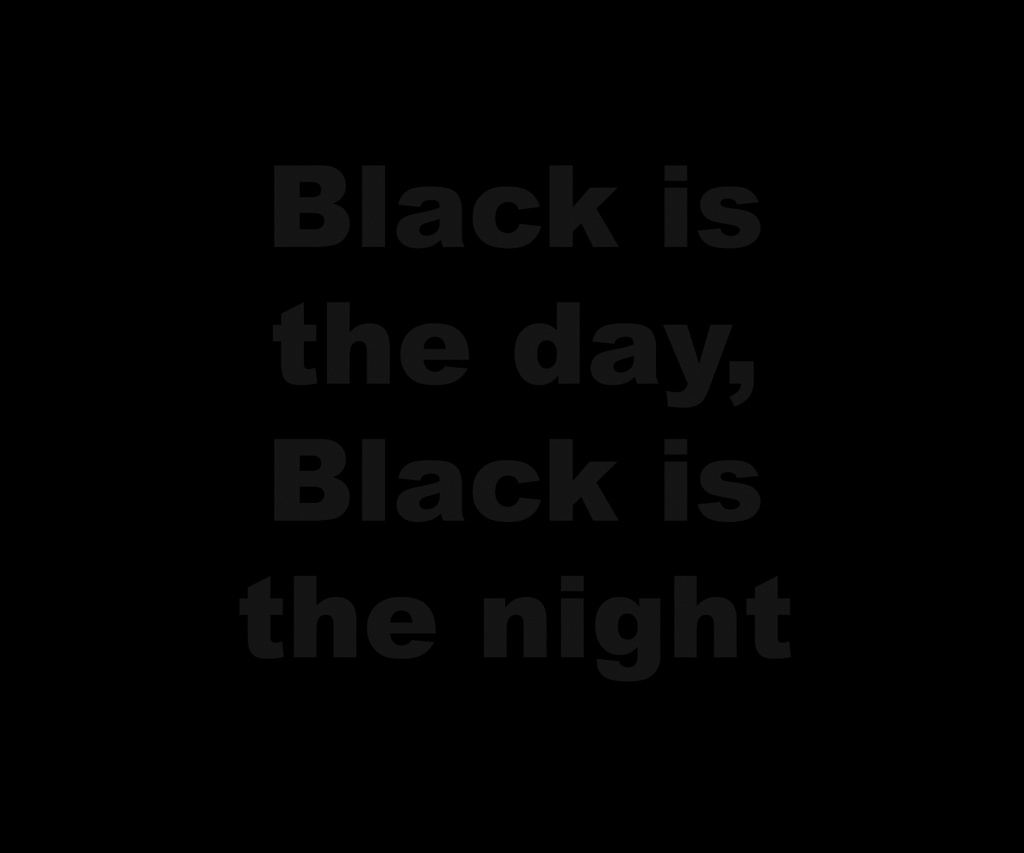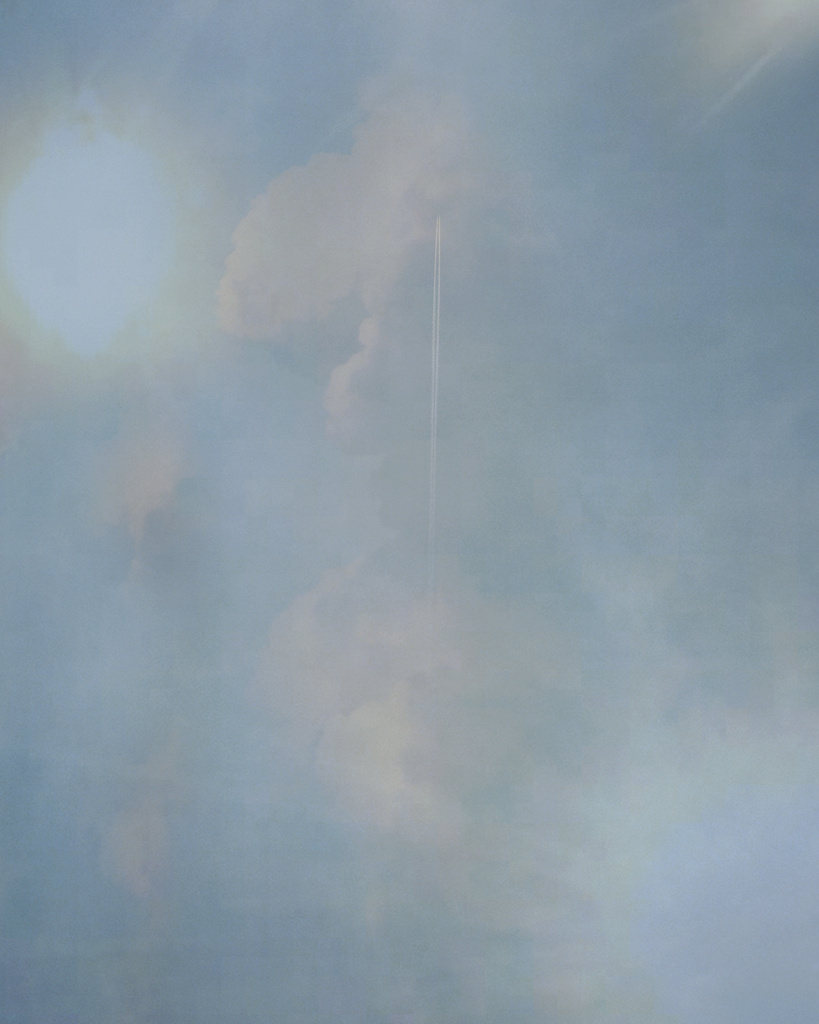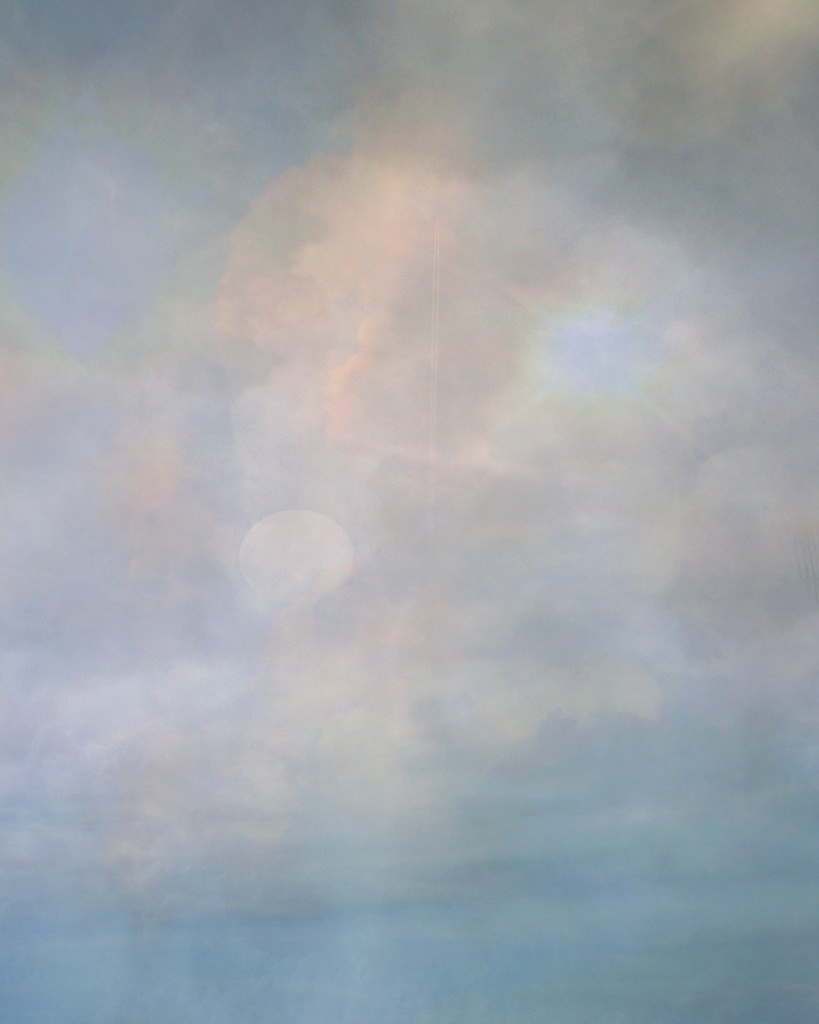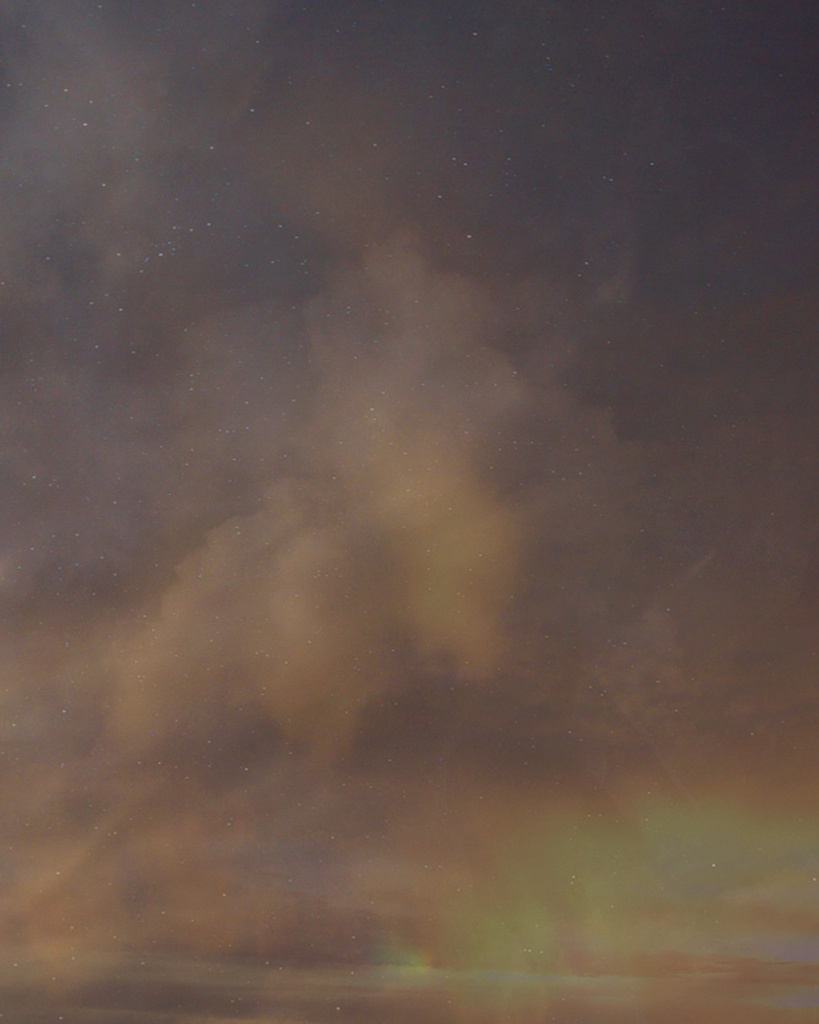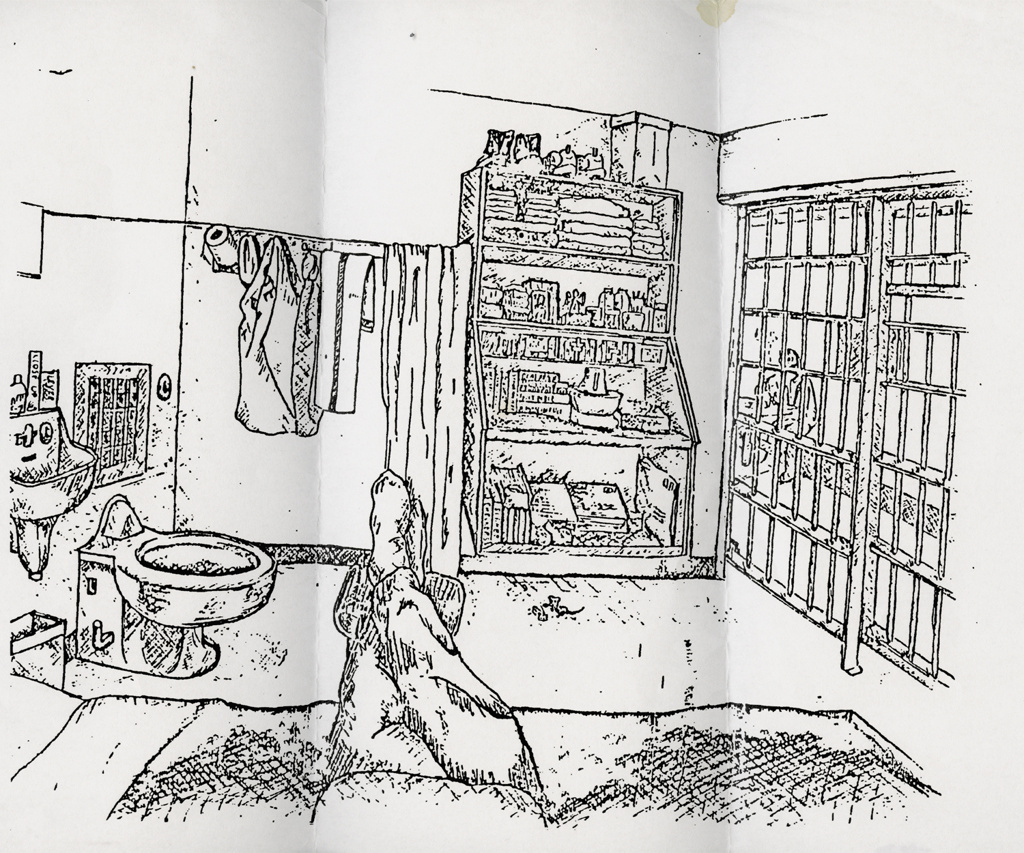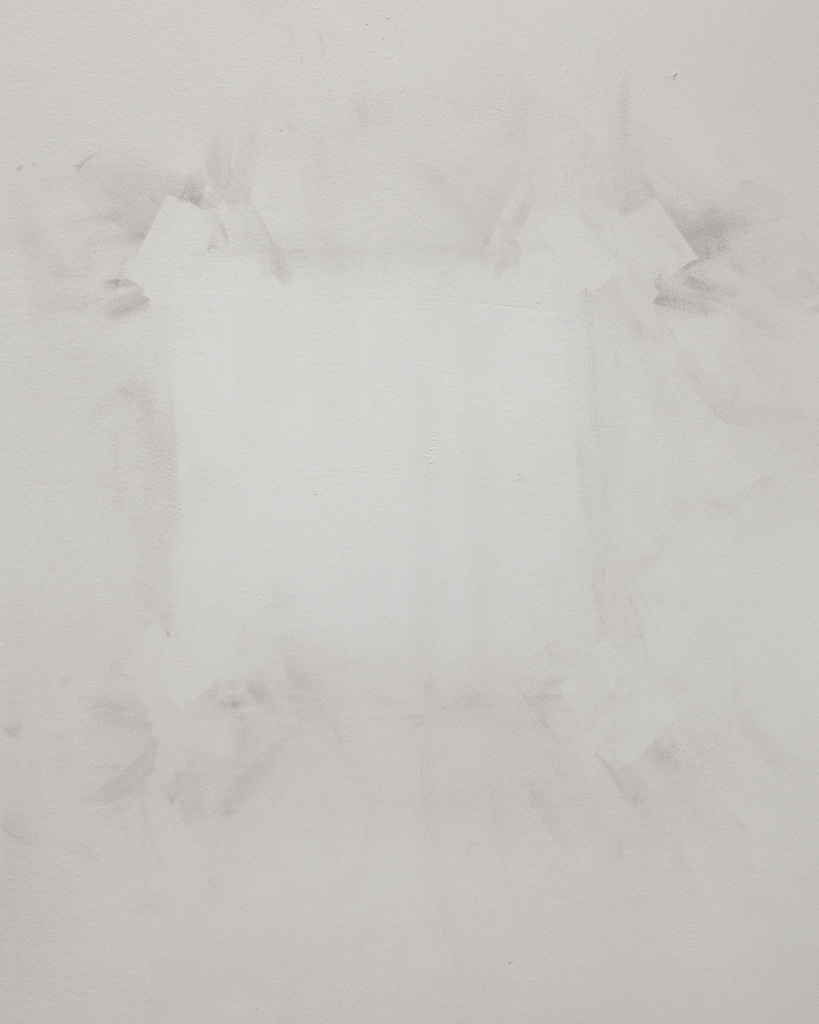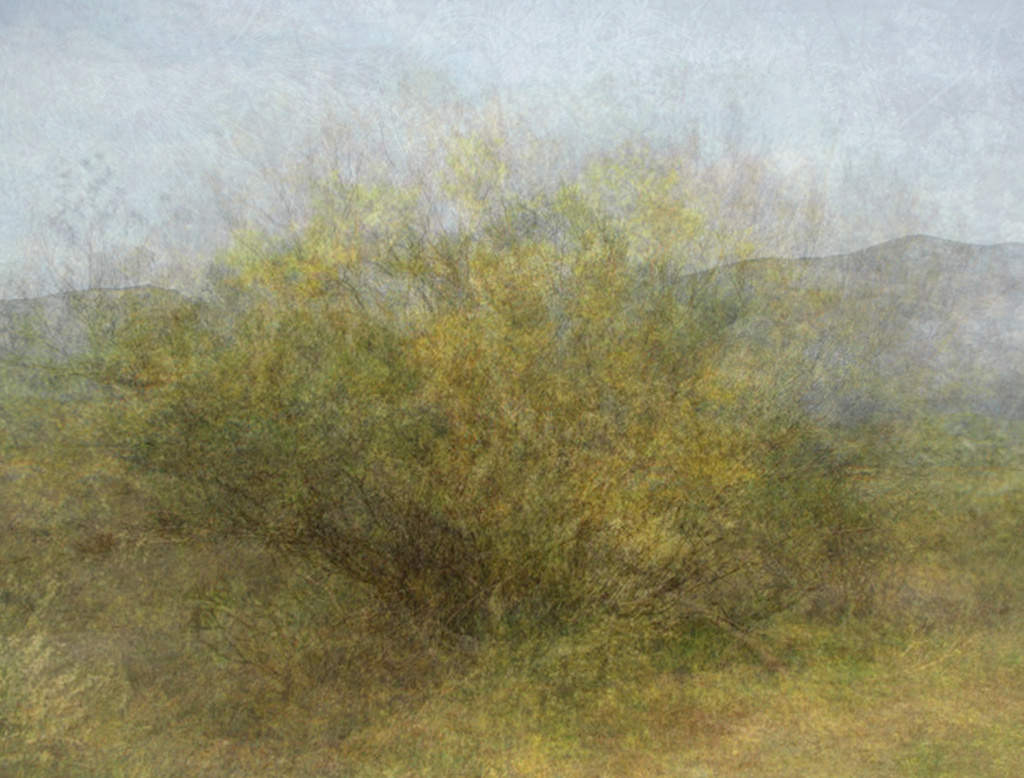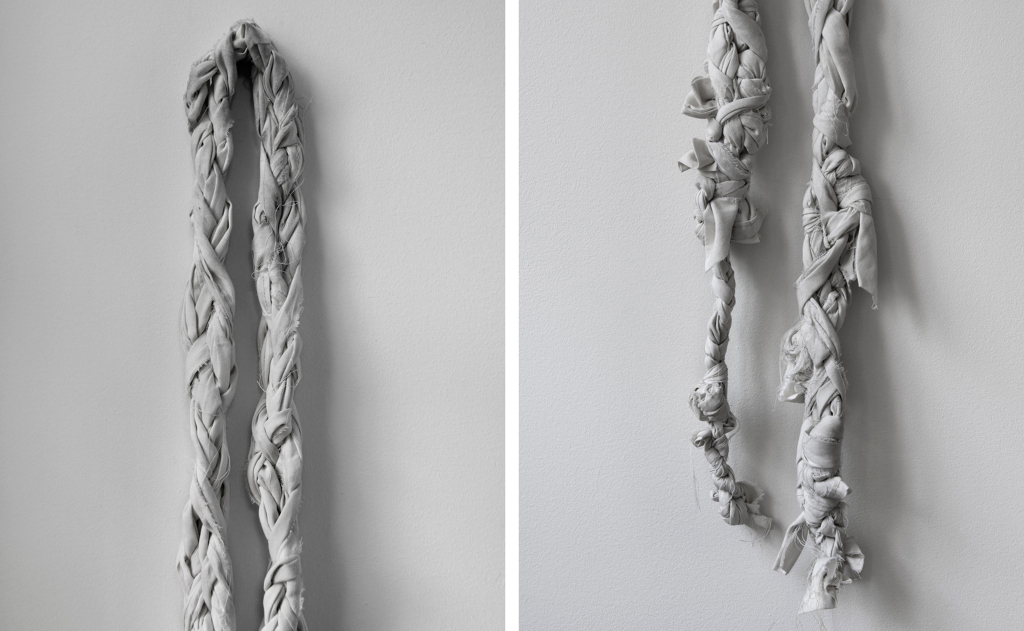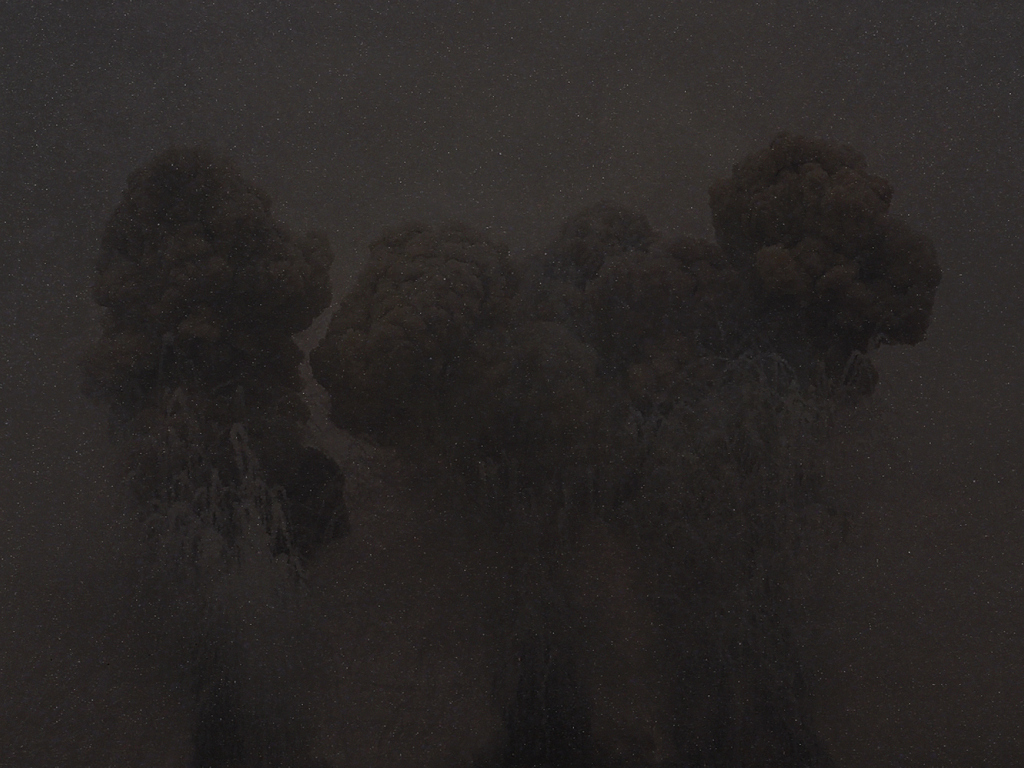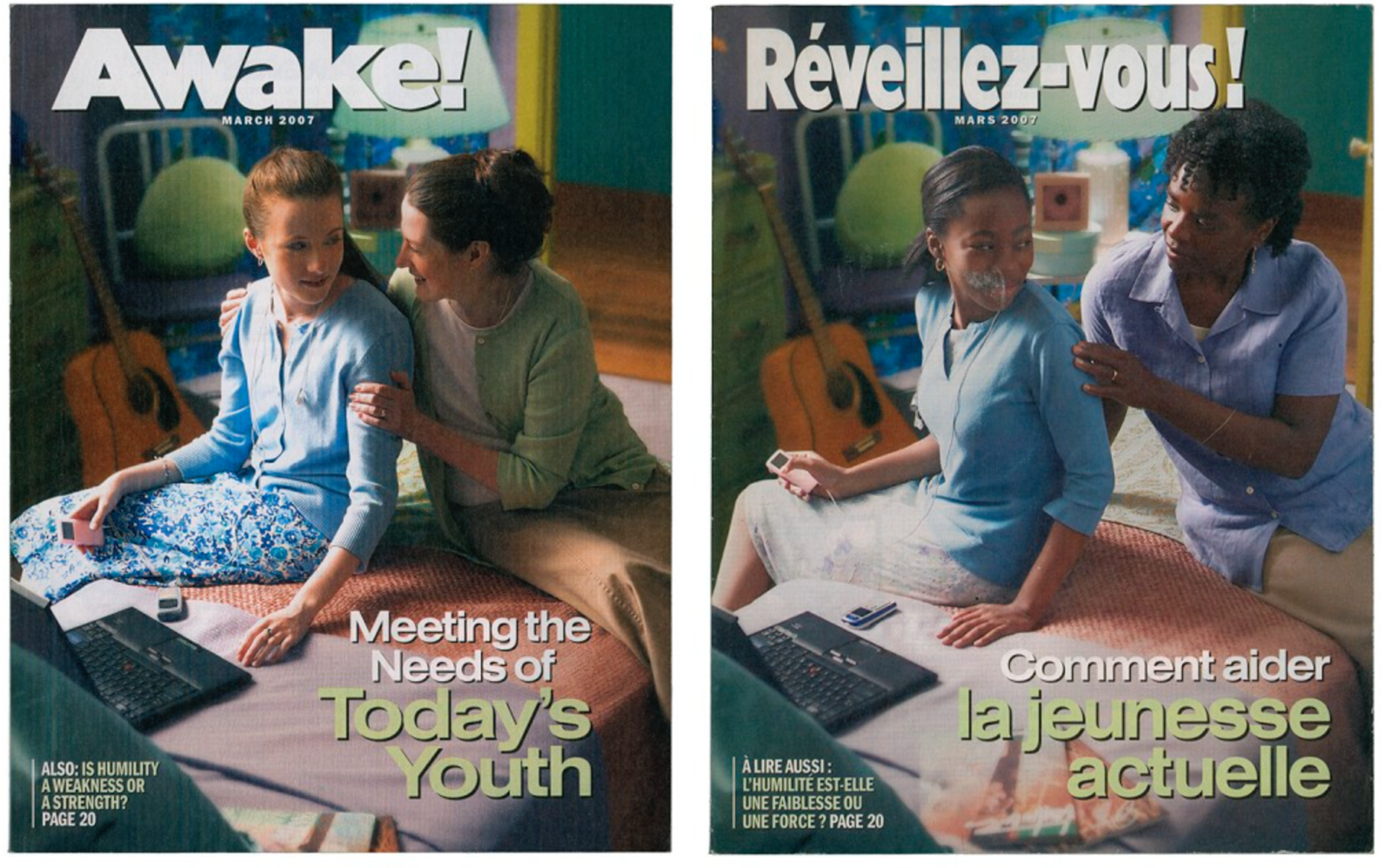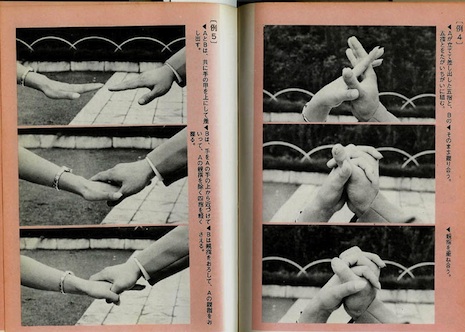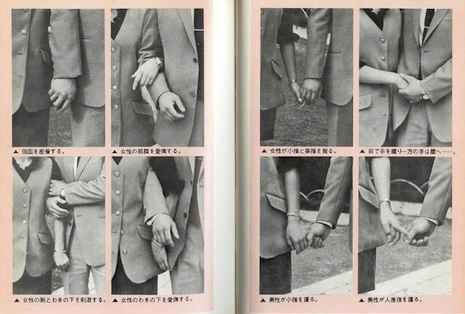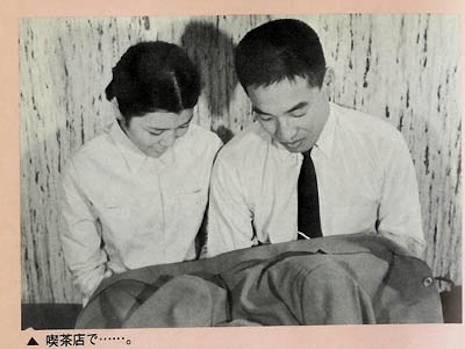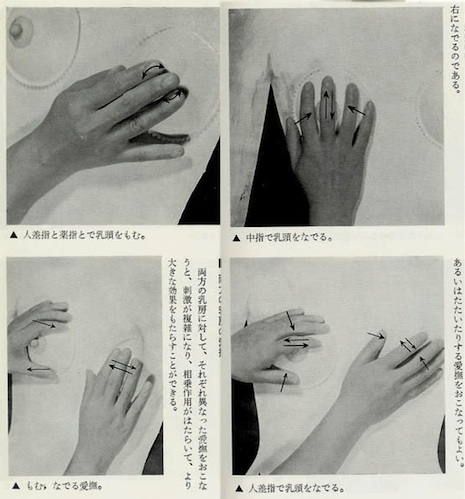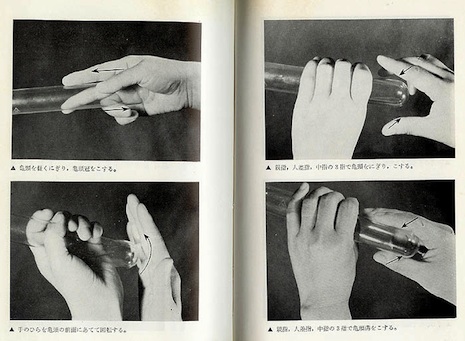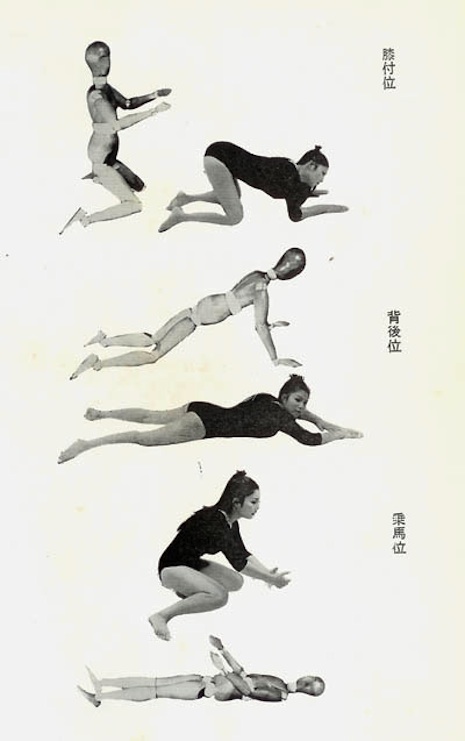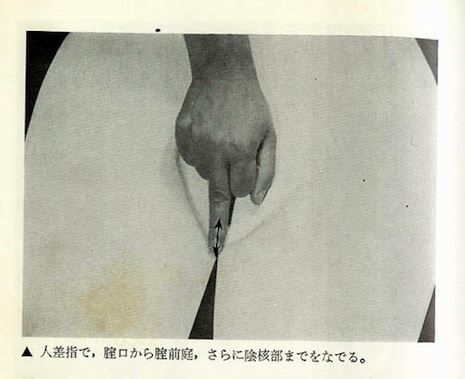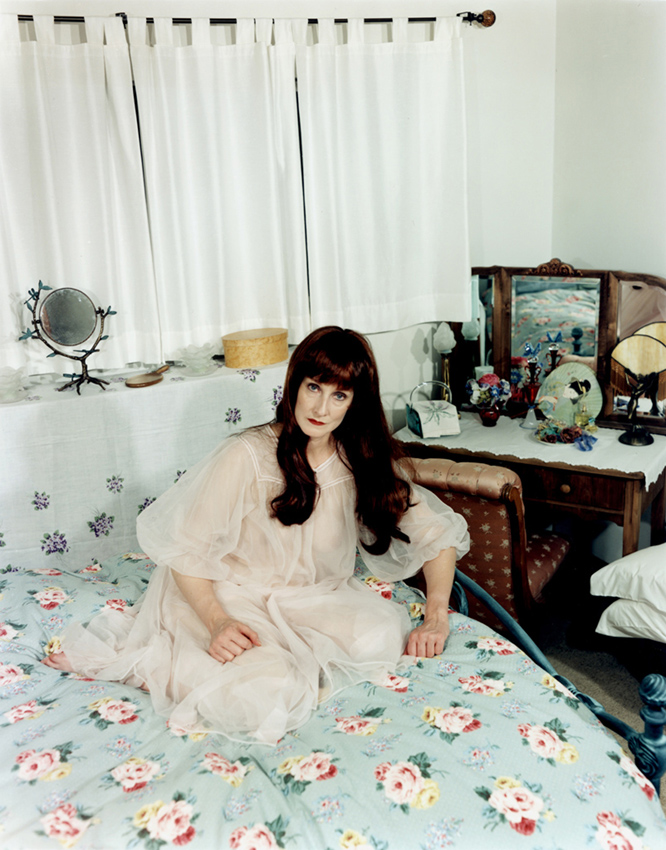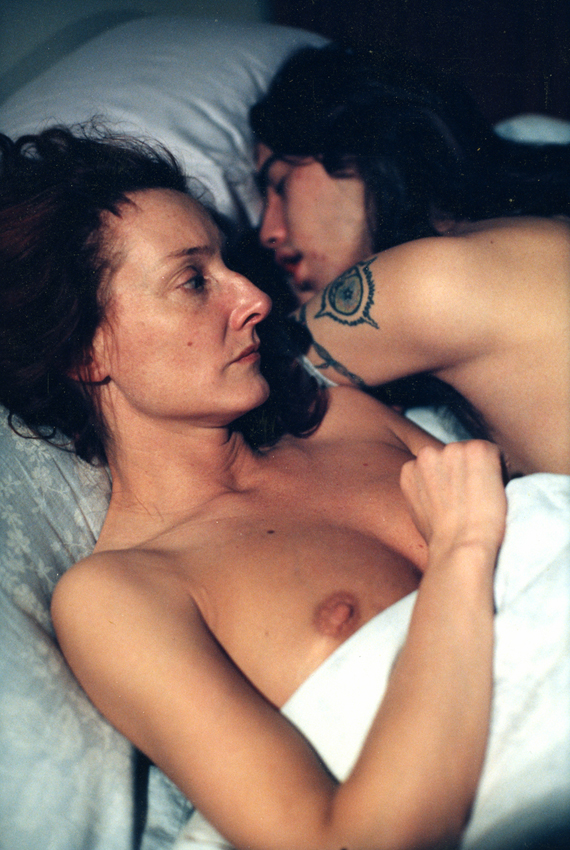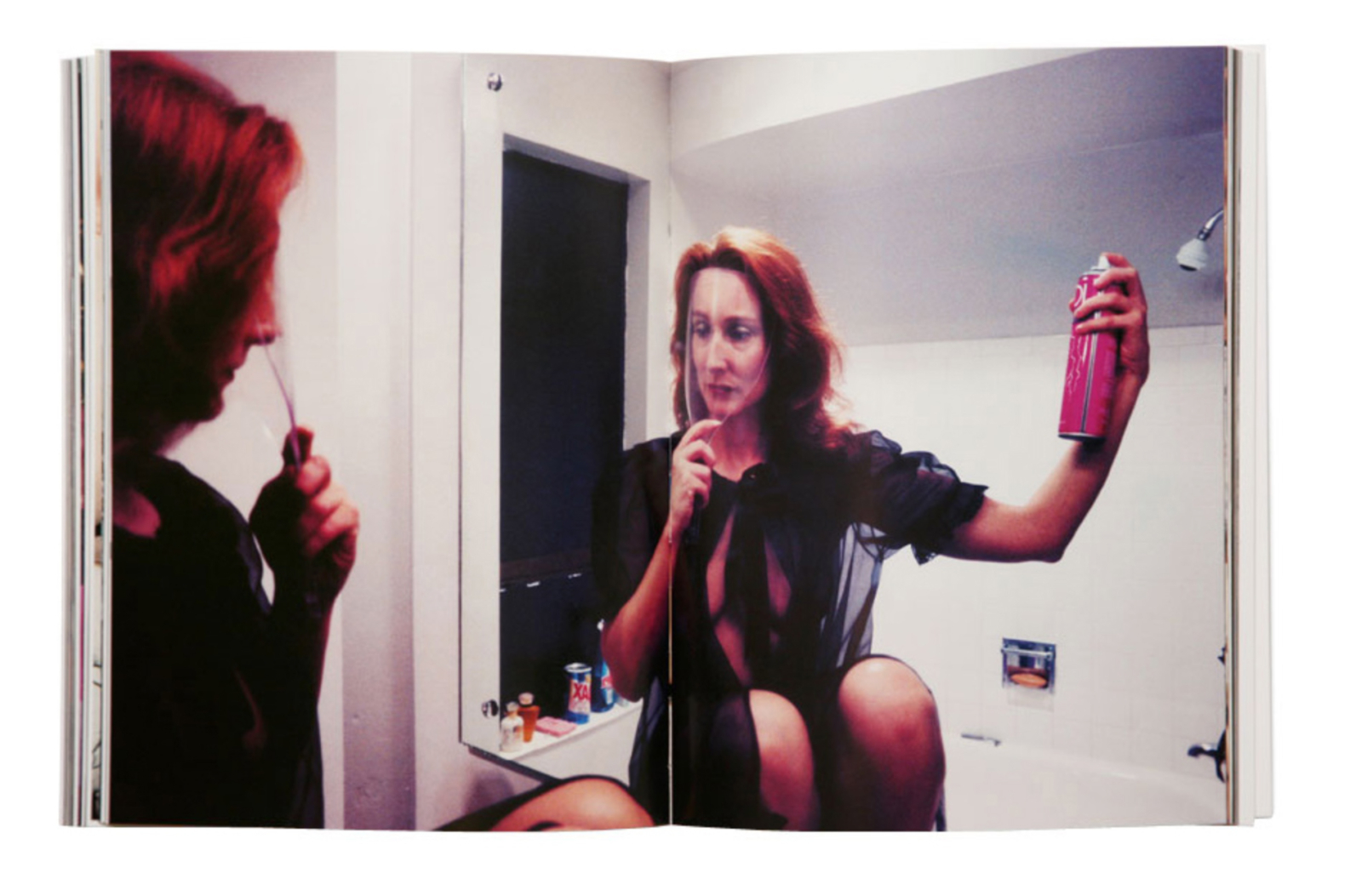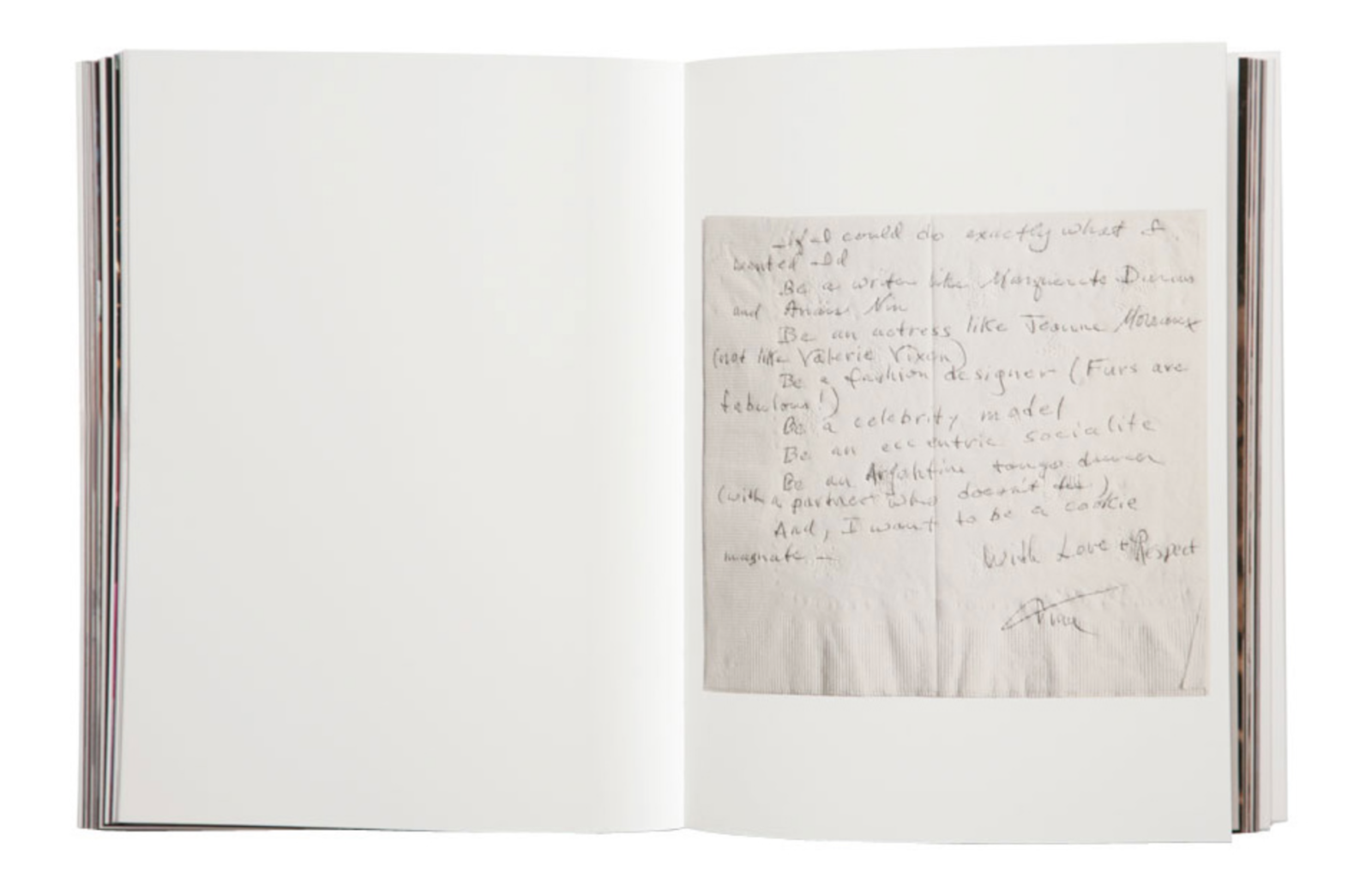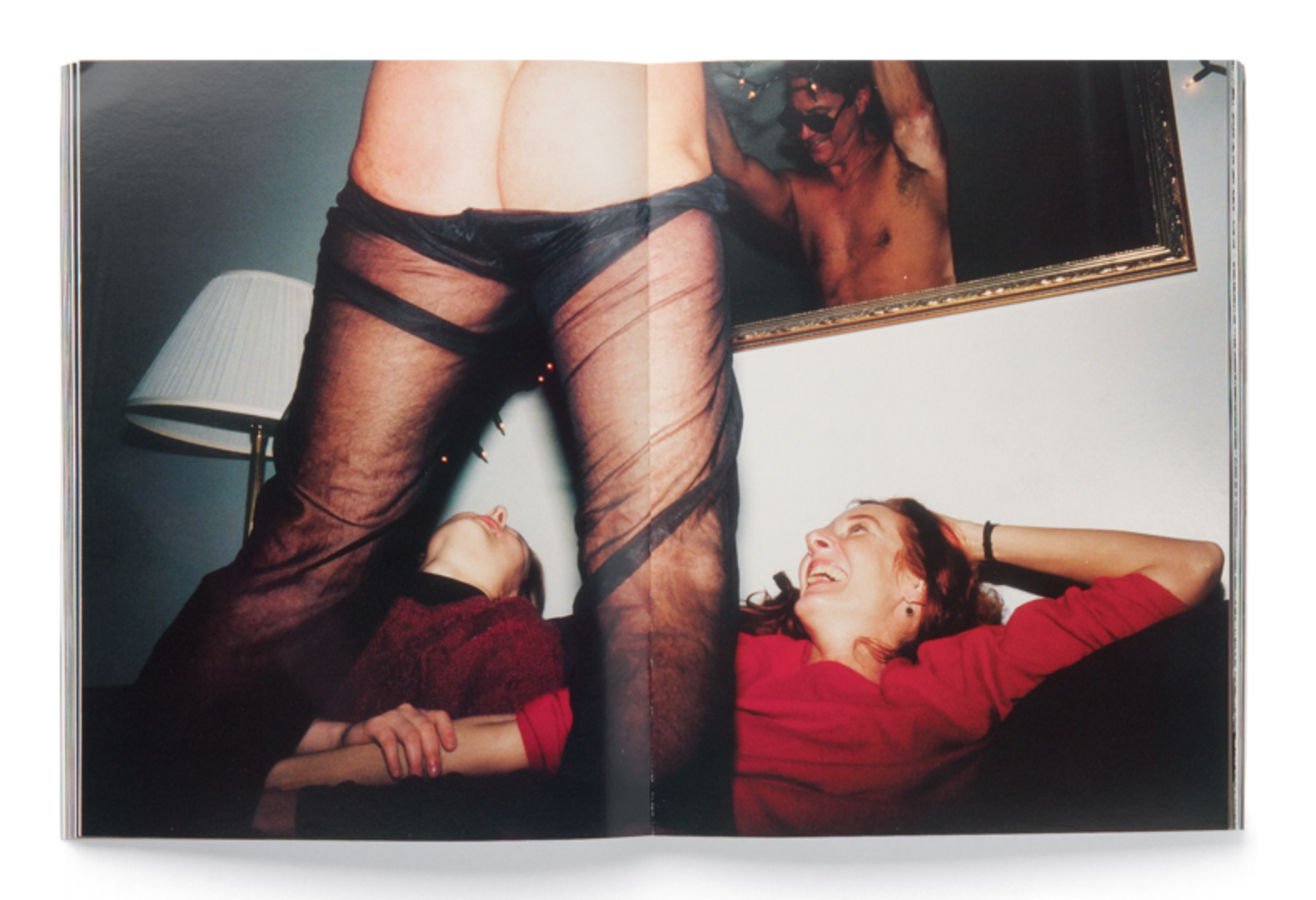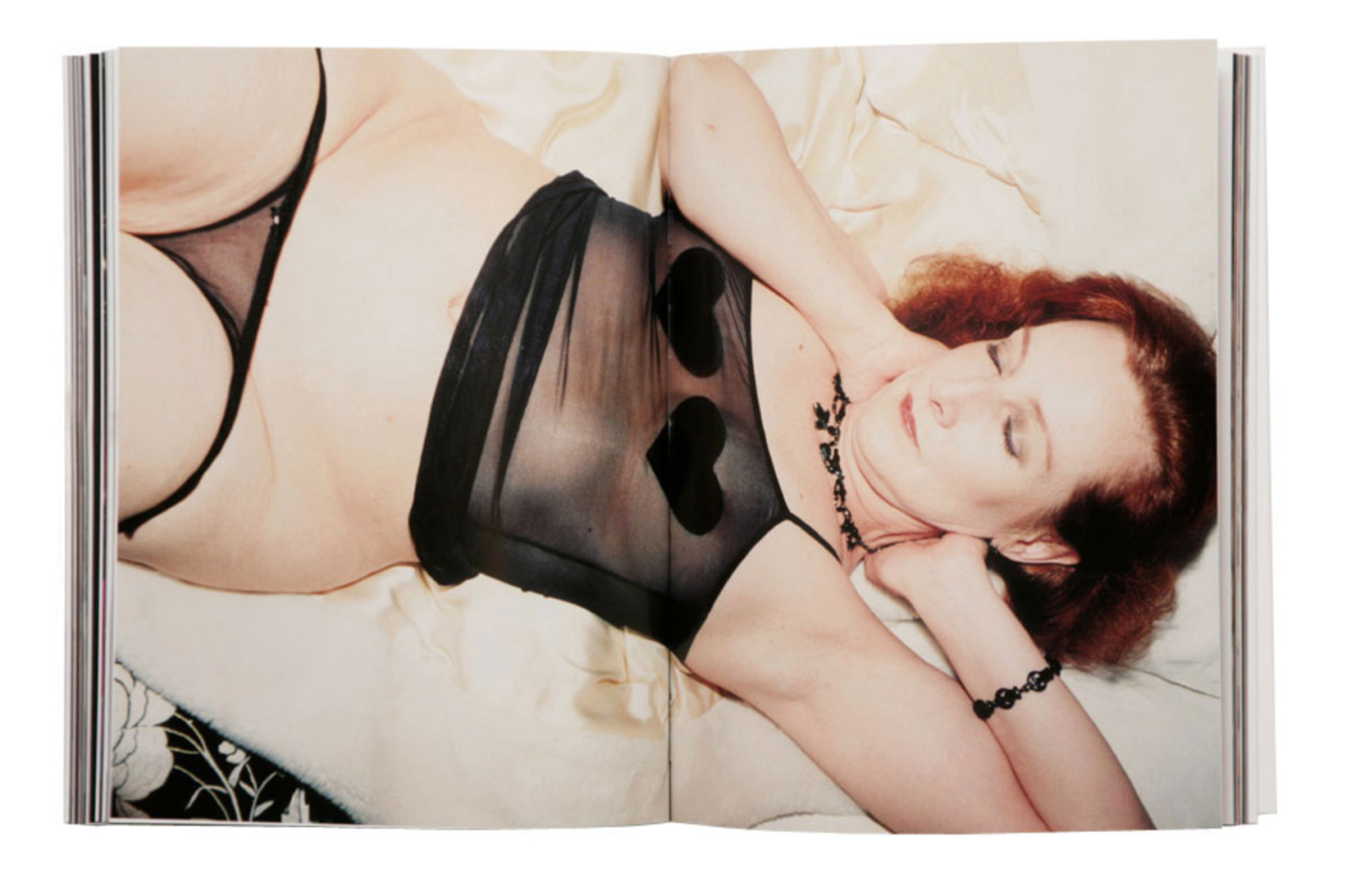Daniel Terna
Artist Feature
Every week an artist is featured whose single image was published by Der Greif. The Feature shows the image in the original context of the series.
Stefanie Moshammer - Vegas and She
Jan 27, 2016
Vegas, what is it? And why are you eating all of her? It‘s the desert with its burning breeze, a man-made oasis in the middle of its wide valley with the mountains around. It‘s the downtown with its faces shaped by life, and the suburbs with its tract homes, tireless and sprawling. A city as a furious beast with many heads, innocence of the past is caught in there, no ability to escape. And then there are the girls, dancing and teasing men‘s desire. Las Vegas is the strip club capital of the world, nowhere else do so many women come just to dance and make money. They are creating an artificial identity, an idealised version of men’s desire, constructed spaces that rely on illusion and fantasy. And they keep Vegas moving, keep it pushing, the inside that keeps the outside alive. The city is like a fast pumping heart and this heart doesn’t only give love. Pain and pleasure are twins in a place full of mystery, wonder and myth, the only point they meet is the stillness of truth. Oh Vegas. Vegas and She. A report of circumstances, evidence, an indication of love and sorrow. Vegas is comedy, tragedy, happiness and sadness, and it comes all in one. When you meet Vegas once you feel like you are standing on the edge of a very tall cliff. If you fall, you fall into a jungle of madness. She as me. Vegas, who is it but a desert breeze. A hot, wild breeze. – Stefanie Moshammer Las Vegas, set in the Mojave Desert, is a sort of brightly coloured parallel universe alongside the rest of America. Bereft of evolved urban culture or traditional legacy, it’s a settlement agglomeration doubling up as a gigantic amusement park. In this ambiguous world, Stefanie Moshammer spent few months working on Vegas and She, a fascinating – and darkly disturbing – portrait of this art(ificial) city and its inhabitants. It depicts the glaringly garish night-shade world of adult entertainment, strippers, and the twilight zones that exist there. Her approach was to portray them in a metaphoric way, to represent the atmosphere and mood in that world they live in. For that, Stefanie is using the body and the surroundings to invite a narrative and to model a certain reality, showing how people, interior and landscape are blending together in a place like Las Vegas. Portraying the world behind the shiny facade of Vegas, with it’s constructed settings and beguiling scenery, the series of images for Vegas and She appear as a contrast to the glitz usually associated with this city. The places she takes her camera to are stark, shiny dreamworlds, they take us away from reality and adrift somewhere between illusion, desire and fantasy.
Artist Blog
The blog of Der Greif is written entirely by the artists who have been invited to doing an Artist-Feature. Every week, we have a different author.
Published in:
»Guest-Room Ingo Taubhorn«
I Can Be Her – Stefanie Moshammer
Feb 02, 2016 - Stefanie Moshammer
Did you ever receive a love letter of a stranger? Well, I did. After already staying in Vegas for 1 1/2 months – experiencing all kind of craziness, meeting the weirdest and also most exciting people, being in jail, and seeing the worst and the best of this city – this letter landed in my mailbox. It was like the tip of the iceberg. It was March 2014 when the letter landed in my mailbox while I lived in Las Vegas. I just ate lunch in the house I stayed, it was one of these classic American houses with a window front and a porch, so you were able to look on the street. I saw an orange car passing by, one of this pick up trucks with huge wheels. The car drove by slowly and the guy looked around, afterwards he parked next to the house. I didn't really see him walking up to the door but he was the one who rang the bell. I opened the door and there was this stranger standing in front of me. He had like a Redneck-Style going on, with his denim jacket, denim trousers, red-headed and his eyes were looking at me like "What the hell are you doing here?" Anyway, he told me he is looking for a woman who is supposed to live in this house. No clue what he talked about so I tried to explain him that he must be wrong. He asked some more questions, I replied some more answers, he left, came again after 5 minutes; making sure I'm still there and actually not the women he was looking for. Long story short: One week later I received a letter of Troy where he basically offered me to live with him – he wanted to be my ticket to USA citizenship. One of my favourite sentences of the letter: "If you came to live with me I would buy you your own cute, special fast car thats almost new, so you feel special and appreciated." Instead of making use of this irreversible offer, I started searching for evidence and indications of Troy without ever getting in touch with him. After receiving the letter I was paranoid, thinking Troy can be around any corner watching me. The series represents past, present and future, covered by layers of dreams, feelings and obsessions. By reproducing ideas inspired by the letter, I captured discoveries made along the way. Troy created his own perception of me; as a result of his letter I created my own perception of him. The images above are only a selection of the series. It hasn't been shown before and will be exhibited in France / Montpellier in April and May for the first time. This was my last post for Der Greif / Guest-Blog. I hope you enjoyed! See you, Stefanie www.stefaniemoshammer.com @stefanie_moshammer
Cristina de Middel’s fictional Journey
Feb 01, 2016 - Stefanie Moshammer
Cristina De Middel is a Spanish conceptual photographer and works with documentary-driven recreations. What I love about De Middel is her approach to transform photojournalism in a new way. She tries to make people aware of certain historical stories but instead of creating it in a photojournalistic way she plays with fiction. The story "This is What Hatred Did" is based on a book from Amos Tutuola’s "My Life in the Bush of Ghosts". The book was published in 1954 and follows a young Nigerian boy who was forced to escape from his village, which has come under attack by soldiers. In her series "This is What Hatred Did", de Middel transposes Tutuola’s story to today’s world. When de Middel was reading Tutuola’s book, she was drawing sketches of how she would translate it into photographs. She used the story to recreate the reality and to describe Africa from a different perspective; one that doesn’t focus on wars, famines, and refugee camps. De Middel shot the whole series in Makoko, a slum in Lagos and one of the city’s most popular destinations among photojournalists. The photos she took in Makoko are strange in an intriguing way, almost comical, and colorfully folkloric. They reflect both the magical realist novel that is their inspiration and the Lagos neighborhood in which they are set. She injects an dreamlike energy into her images that raises them above the average. Each picture is a small story, an allegorical lesson, or an eye-opening tale of unexpected childlike weirdness, the everyday turned into the otherworldly by a fertile imagination. "I was a photojournalist for more than 10 years and I really liked this immediacy and strong link with reality that journalism has, but I got very disappointed with the repetitive language they use. I started then exploring new ways of saying the same and that is by using fiction. People engage with fiction in a complete different way and I believe this approach could bring some power back to photography when it comes to try and change the world." "A photojournalist should learn from artists, learn to tell stories differently, to educate the public and teach themselves to explain things better. Your responsibility is to make people understand what is actually happening. Using fables, myths and superstition to describe the world we live in is not exactly something that I invented…its been there since the beginning of time but we just fell, specially in photography, into an absurd spiral of trying to tell the “truth” that reduces dramatically the richness of most of the situations." – Cristina de Middel
Amy Elkins – BLACK IS THE DAY, BLACK IS THE NIGHT
Jan 31, 2016 - Stefanie Moshammer
I found this series few weeks ago and totally fell in love with the approach of the photographer. Not only the way she visualized the topic, also the content itself is very interesting. The series utilizes portraits, text pieces, layered/manipulated photographs, aerial land images as well as found objects. "Black is the Day, Black is the Night is a conceptual exploration into the many facets of human identity using notions of time, accumulation, memory and distance through personal correspondence with men serving life and death row sentences in some of the most maximum security prisons in the U.S., all of which had served between 13-26 years at point of contact. The men I wrote with spent an average of 22-1/2 hours a day in solitary cells roughly 6’x9’; not only facing their own mortality, but doing so in total isolation. I wondered how that would impact one’s notion of reality, of self-identity or of their memories outside such an environment? Did they embrace the mind of a dreamer, the mind of a thinker or succumb to their bleak environment and allow mental, physical and emotional collapse? Did their violent impulses land them in an infinite state of vulnerability? Between 2009 and 2014 we would write and share stories regarding our very different day-to-day lives. I constructed images using formulas specific to each of their described memories, age and years incarcerated. Through these formulas, their portraits became more unrecognizable and their memories became more muddled, regurgitated and fictional with the endless passing years of their sentences. Stripped of personal context and placed in solitary cells, their sense of identity, memory and time couldn’t help but mutate. Additional tangible objects such as drawings, letters and envelopes are interspersed amongst the constructed landscapes and pixelated portraits, along with objects sought out or recreated out of descriptions given. Of the seven men I originally wrote with: one was executed in 2009 and one was executed in 2012, both of which maintained their innocence throughout their sentences. Three eventually opted to move on from the project. One was released in 2010 at the age of 30, after spending 15 years in prison. One was released in 2015 from a life sentence that had been given to him at the age of 16. He had served twenty-two years in an adult super max prison, seventeen of which were spent in solitary confinement." Amy Elkins (born in Venice, California, 1979) is a photographer currently based in Greater Los Angeles. www.amyelkins.com
Mikhael Subotzky and Patrick Waterhouse – Ponte City
Jan 30, 2016 - Stefanie Moshammer
[vimeo video_id="94960698" width="1000" height="563“] This piece of work from Mikhael Subotzky and Patrick Waterhouse mirrors Ponte City, the apartment building that towers over Johannesburg, South Africa. Ponte City has now become a symbol for urban decay, metaphorically standing for all that ails the new, post-apartheid society. Right around the time when developers attempted to “revitalize” the building (talking about gentrification), Mikhael Subotzky and Patrick Waterhouse went to Ponte City to document it. They photographed every door and the view from every window. Subotzky and Waterhouse combine photography, historical archives, found objects, and interviews to create a body of work that spans the pre-history of the building, its spectacular decline, and the recent attempts at its transformation. The building is cast as the central character in a tangled narrative about Johannesburg’s magnetic pull on people from all over the continent. However you want to look at it, you’re essentially not looking at one story, you’re looking at multiple ones. Abandoned apartments, with material left behind by those long gone; a ruin – or not quite ruin – of the past; the transition from one regime to another; immigration; wealth and the lack thereof; and so on. The book isn’t a book, it’s a book in a box that also contains 17 separate booklets. The booklets themselves each focus on one particular aspect, be it an essay, or selections from the different types of materials. www.subotzkystudio.com
Japanese Vintage Sex Guide for young People
Jan 29, 2016 - Stefanie Moshammer
 There is something really fascinating about Japanese culture, especially their double moral standards they're having.
This sex guide is innocent, disturbing and completely beautiful all at the same.
Sometimes sex guides can seem strange and slightly off putting, like those creepy illustrations of hirsute men enjoying the missionary position in Alex Comfort’s The Joy of Sex, or even cold and scientific, like a technical drawing from Popular Mechanics. This Young Person’s Guide to Sex from the 1960s is a case in point. It starts off practical enough with courtship rituals and hints about handholding and flirtation, before suddenly switching into a kind of Ballardian handbook on sex—with test tubes, and artist mannequins attempting to straddle a young woman.
"Sexual activity and interest has been declining in Japan for years, and is in part blamed for Japan's decreasing birth rate. Because Japan has one of the lowest birth rates in the world - and its population is on course to shrink dramatically by the middle of the century, every five years the government carries out a detailed survey of attitudes to sex and marriage. The studies and surveys have reported loss of sexual drive across several demographics, from adolescent men and women, to married couples."
Maybe this guide should be produced in a new edition.
There is something really fascinating about Japanese culture, especially their double moral standards they're having.
This sex guide is innocent, disturbing and completely beautiful all at the same.
Sometimes sex guides can seem strange and slightly off putting, like those creepy illustrations of hirsute men enjoying the missionary position in Alex Comfort’s The Joy of Sex, or even cold and scientific, like a technical drawing from Popular Mechanics. This Young Person’s Guide to Sex from the 1960s is a case in point. It starts off practical enough with courtship rituals and hints about handholding and flirtation, before suddenly switching into a kind of Ballardian handbook on sex—with test tubes, and artist mannequins attempting to straddle a young woman.
"Sexual activity and interest has been declining in Japan for years, and is in part blamed for Japan's decreasing birth rate. Because Japan has one of the lowest birth rates in the world - and its population is on course to shrink dramatically by the middle of the century, every five years the government carries out a detailed survey of attitudes to sex and marriage. The studies and surveys have reported loss of sexual drive across several demographics, from adolescent men and women, to married couples."
Maybe this guide should be produced in a new edition.
Leigh Ledare – Pretend You’re Actually Alive
Jan 28, 2016 - Stefanie Moshammer
Leigh Ledare (born 1976, US) left home at 15, attended Rhode Island School of Design worked as an assistant to Larry Clark who is clearly a influence on Ledare (TULSA 1971). He uses photography, archival material, text and film to explore human agency, social relationships and taboos. His issues mostly relate to desire, identity, and morality. Pretend You’re Actually Alive is capturing the exhibitionist sexuality of his own mother and shows an extreme mother-son relationship. All of these photographs deal with Tina, Ledare's mother – an influential muse of this project and a highly extravert personality. As a teenager Tina was a ballet dancer who turned to stripping when her career ended. For seven years, Ledare has been photographing his mother in her most intimate acts and attitudes, exploiting her need for recognition and her boundless and exhibitionist attitude. He decided to work on this project when he got home one Christmas: "I arrived at home not having seen her for a year and a half, she knew I was coming and opened the door naked." He said when he entered the house and caught a glimpse into her bedroom "a young man, almost exactly my age, was sprawled out naked. He rolled over to see me, saying hello, before rolling back over and returning to sleep." Ledare interpreted this welcome as "her way of announcing to me what she was up to, at this period in her life – almost as though to say, 'Take it or leave it.' I had a camera and began making photos of her then. She was the catalyst." For me, the power of this work is in the collaboration of the artist and his subject. Somehow he has combined the best and the worst elements of Goldin, Billingham, and McGinley. Ledare’s photographs of his mother are as much about performance as they are about her life — and even if the performance is compelling, the subject is dehumanized; the performance matters more than the performer. “I don’t see this as a portrait of one woman’s eccentricity,” Ledare wrote in a statement, “but as a temporal mapping of reactions to realities in the world, psychological realities we carry with us from situation to situation, positions we must negotiate, subtexts we find ourselves living within.” Pretend You’re Actually Alive got published in 2008.


